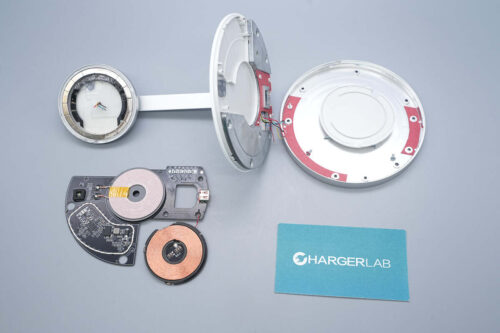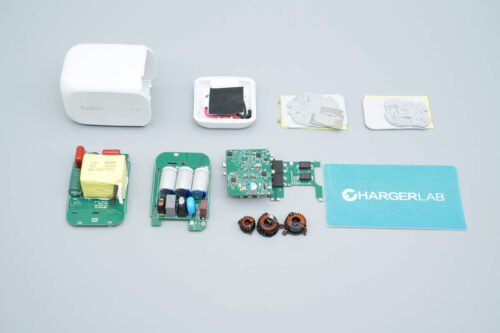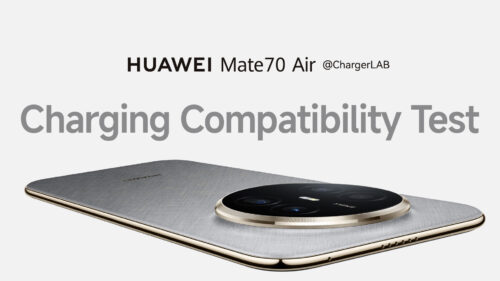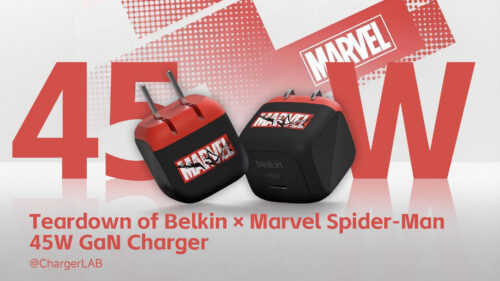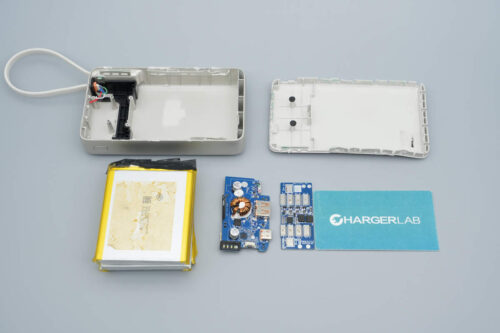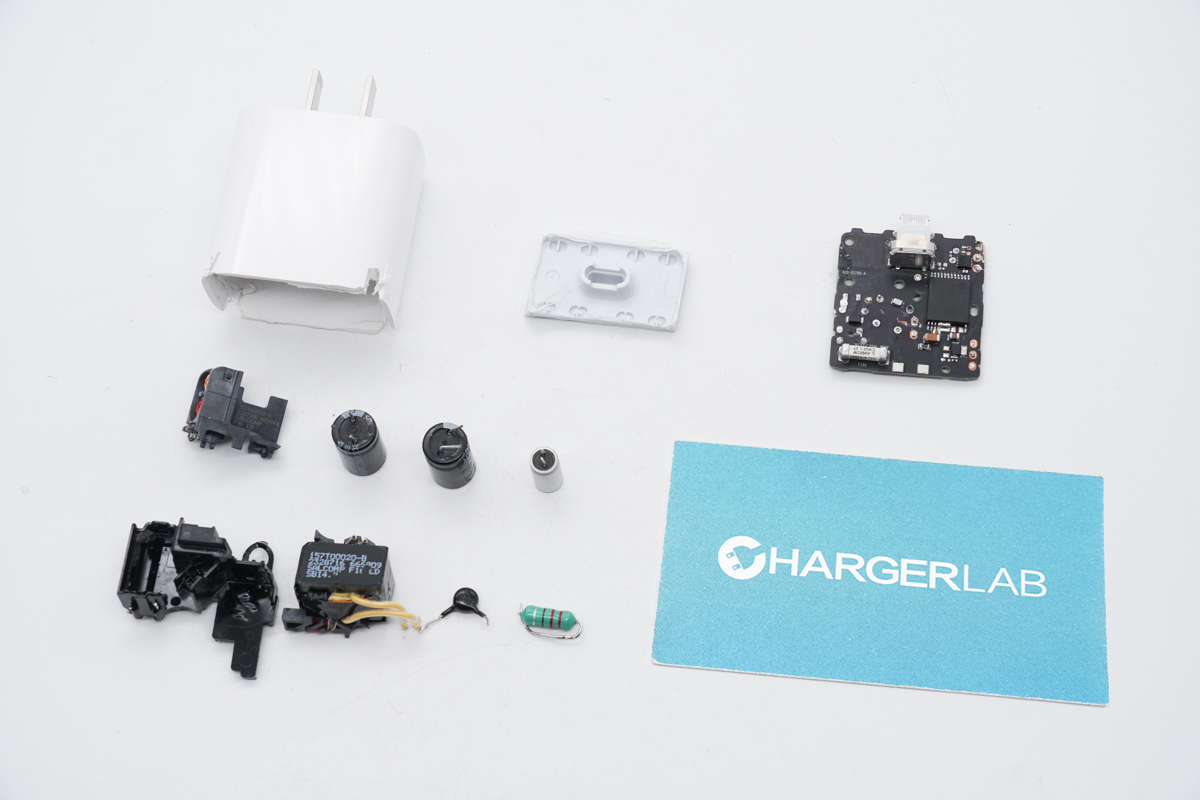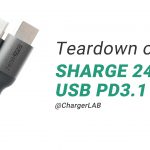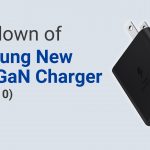Introduction
Xiaomi has also released a 2-in-1 Magnetic Wireless Charger, capable of delivering up to 30W wireless charging for devices such as the Xiaomi 15, 15 Pro, and the upcoming Xiaomi 17 series. The base provides an additional 5W output, suitable for charging accessories like earbuds. The charging panel supports adjustable angles from -20° to 50°, offering a comfortable and natural viewing experience. Let's take a closer look at the design and build quality of this product.
Product Appearance
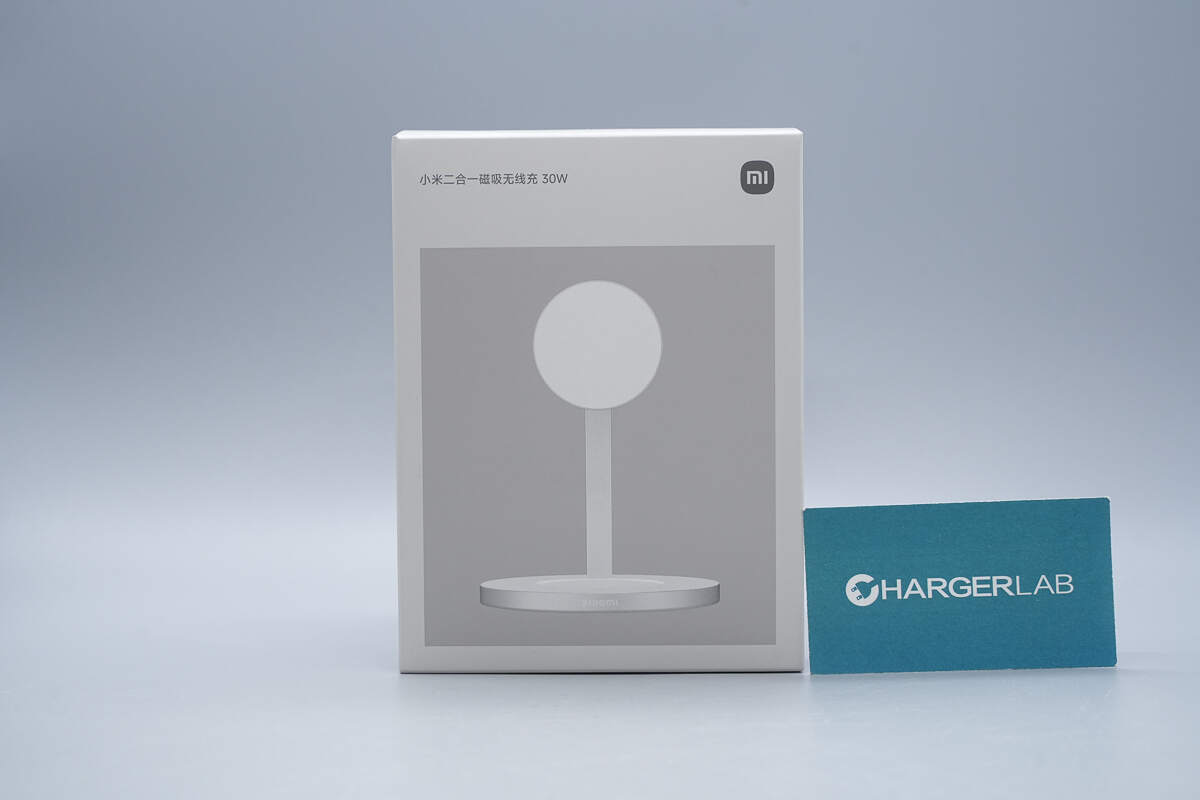
The front of the packaging features the Xiaomi logo, the product name, and an image of the product.
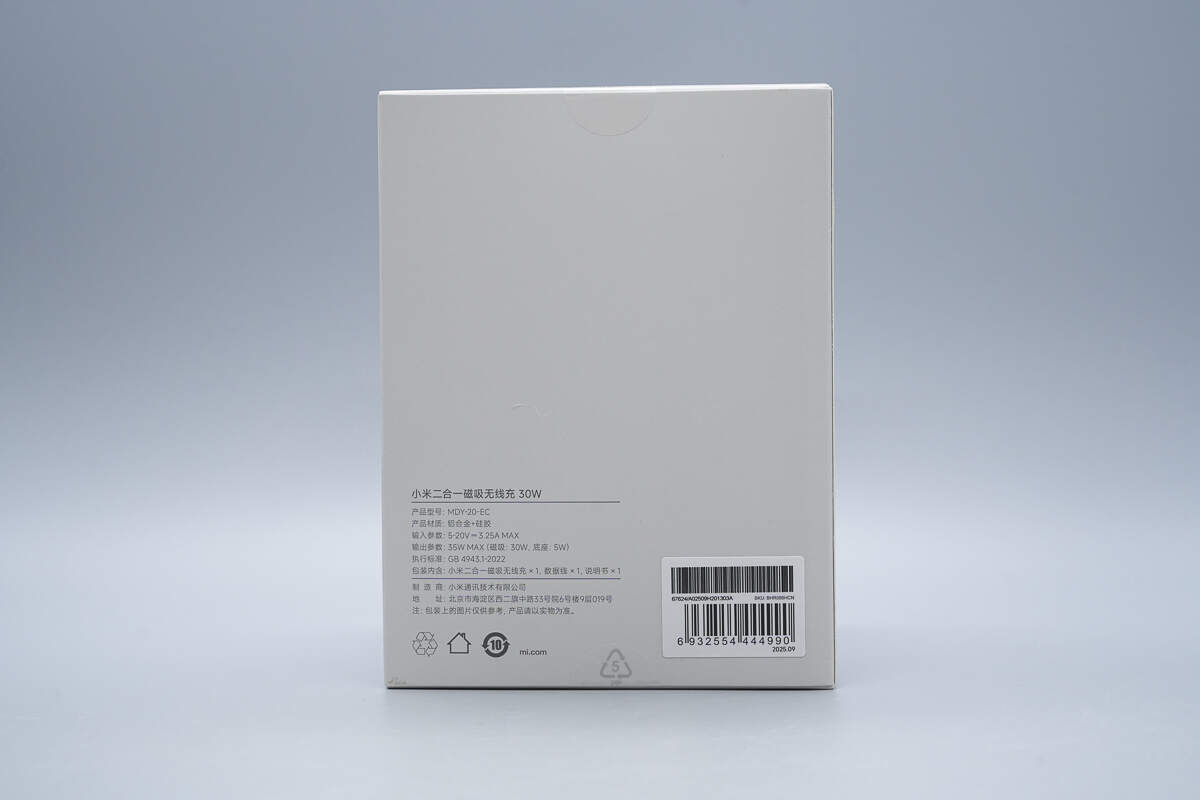
The back of the packaging displays the specifications.
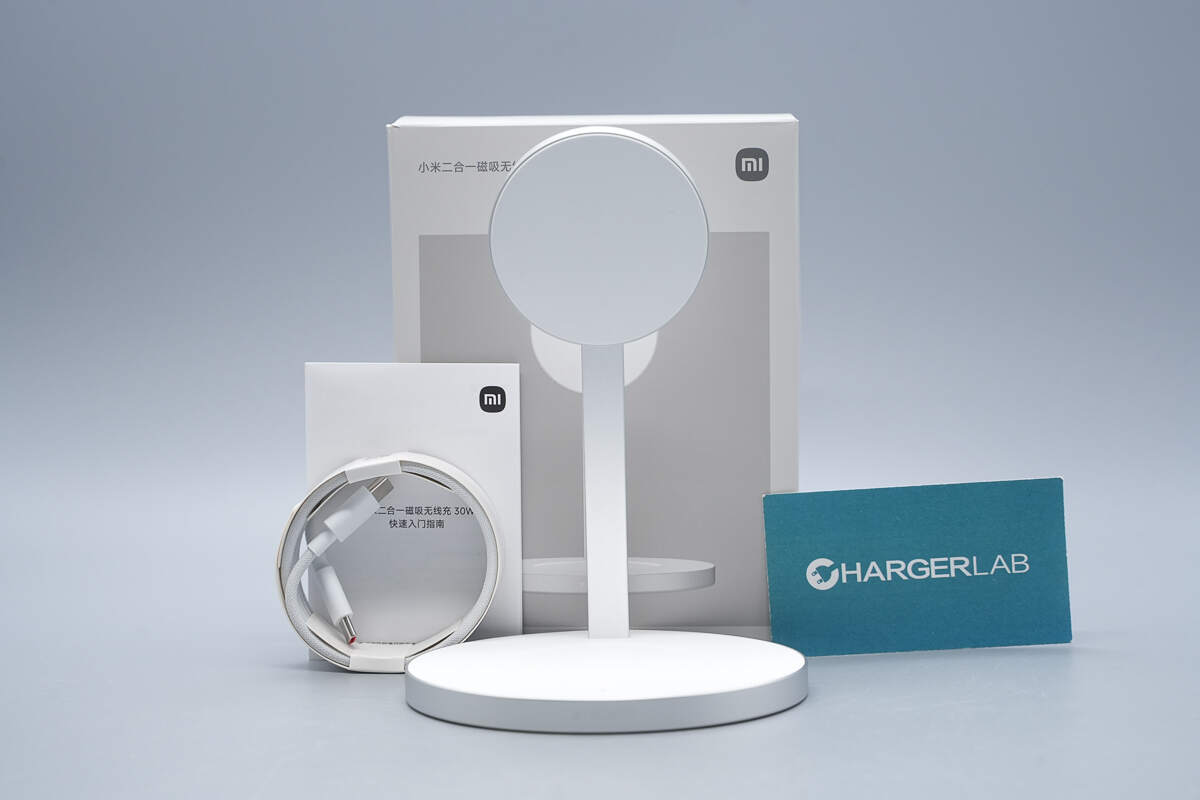
The package includes the 2-in-1 charger, a cable, and some documentation.
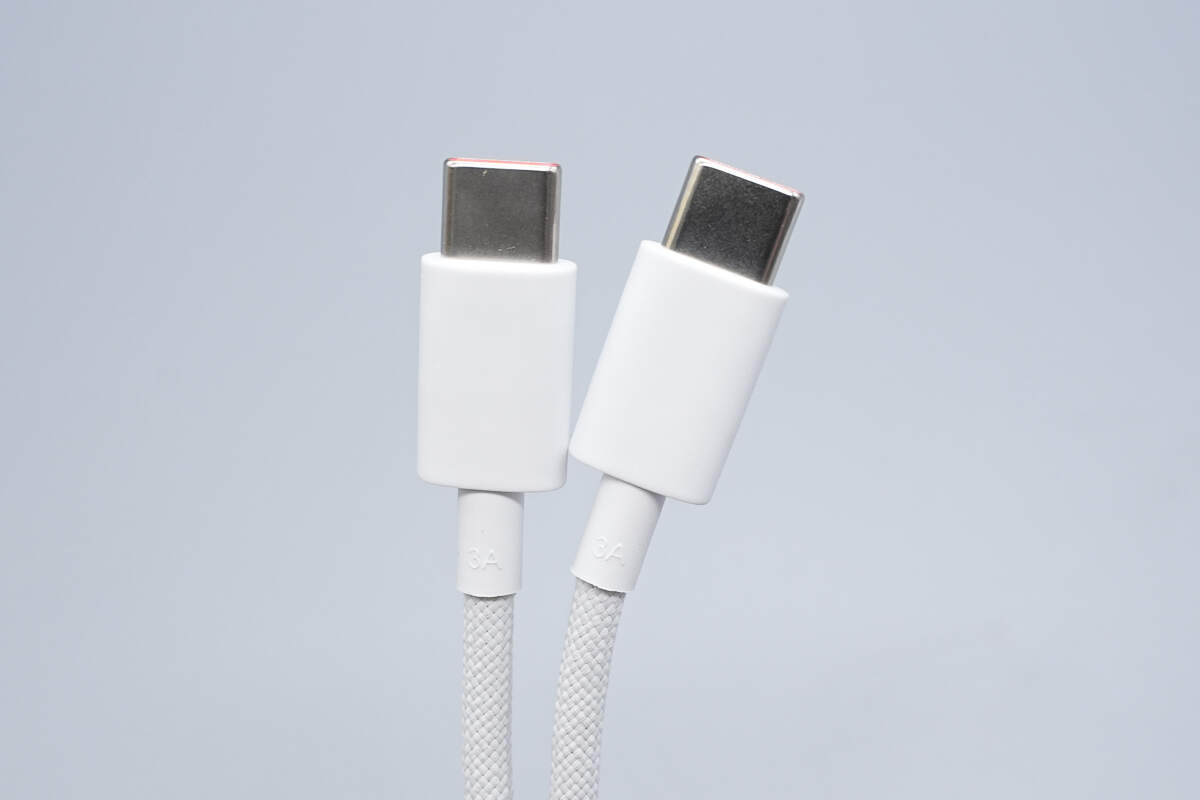
The included cable is a braided USB-C to USB-C cable.
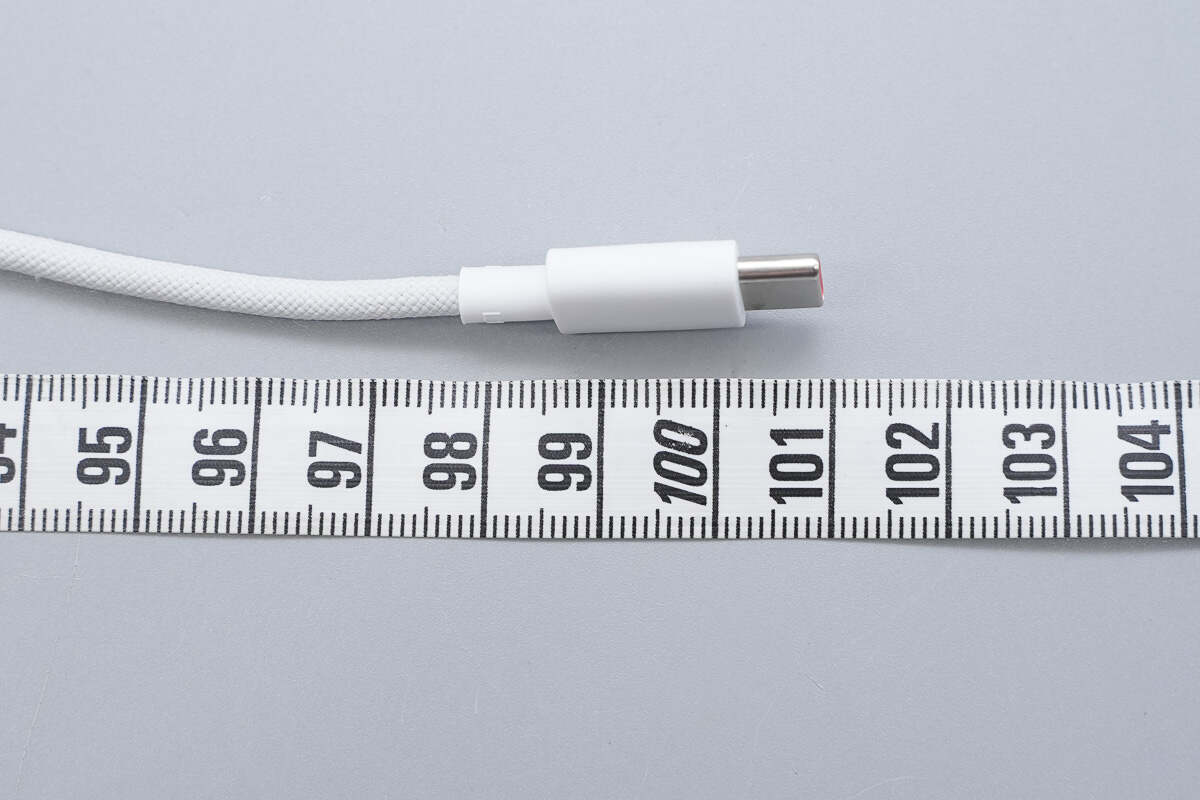
The length of the cable is about 101 cm (39.76 inches).
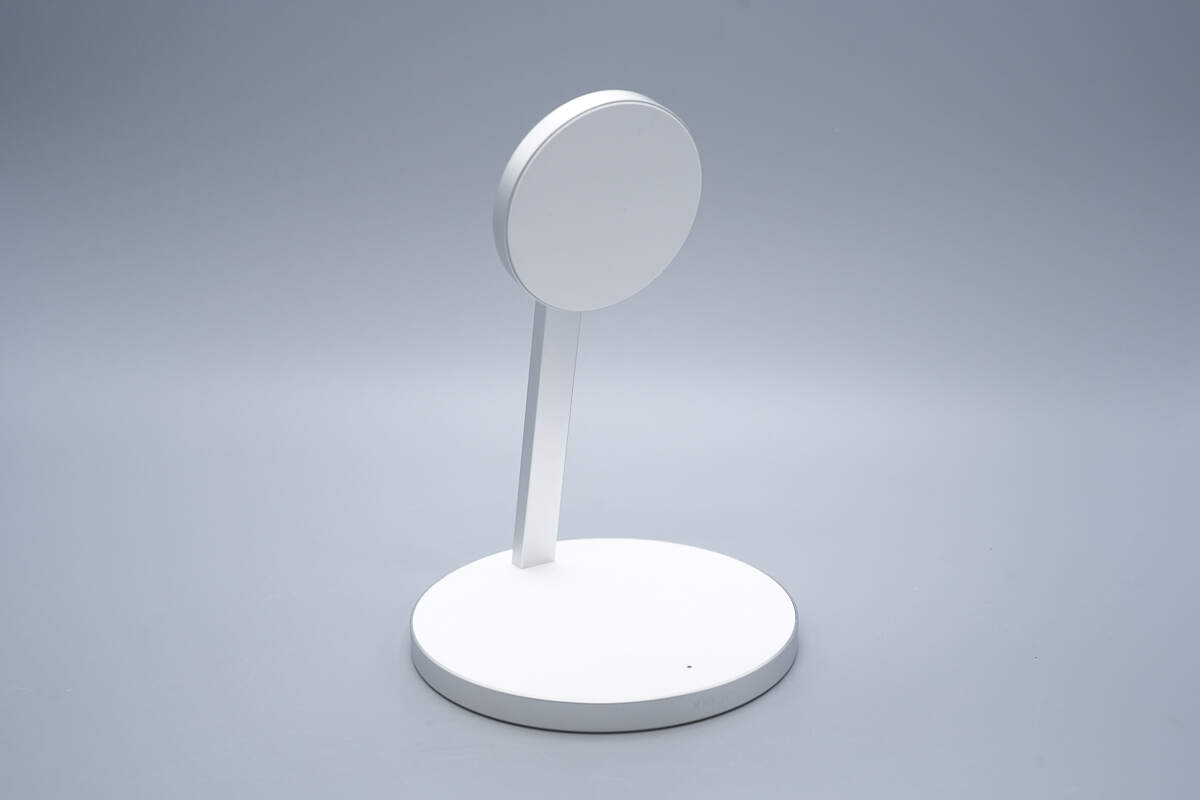
The body is made of aluminum alloy and silicone, featuring a minimalist design.
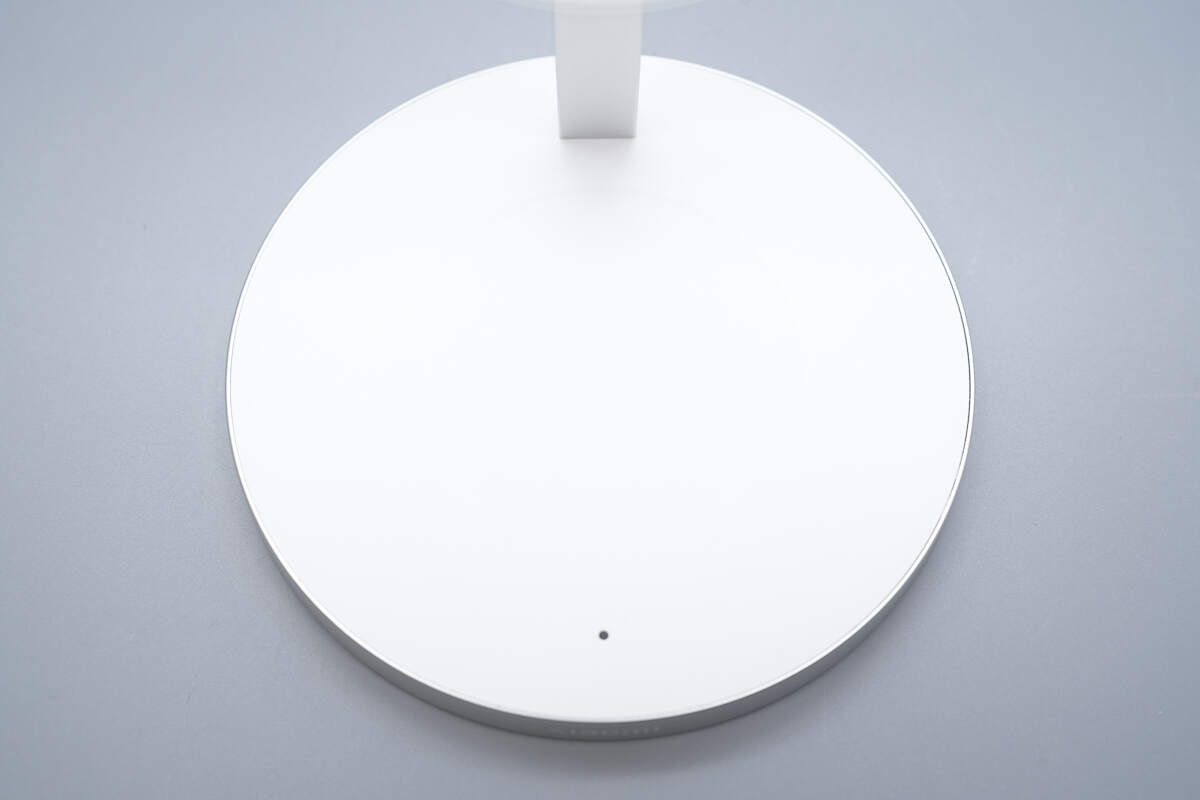
The top of the base is covered with a silicone panel and features an indicator light.
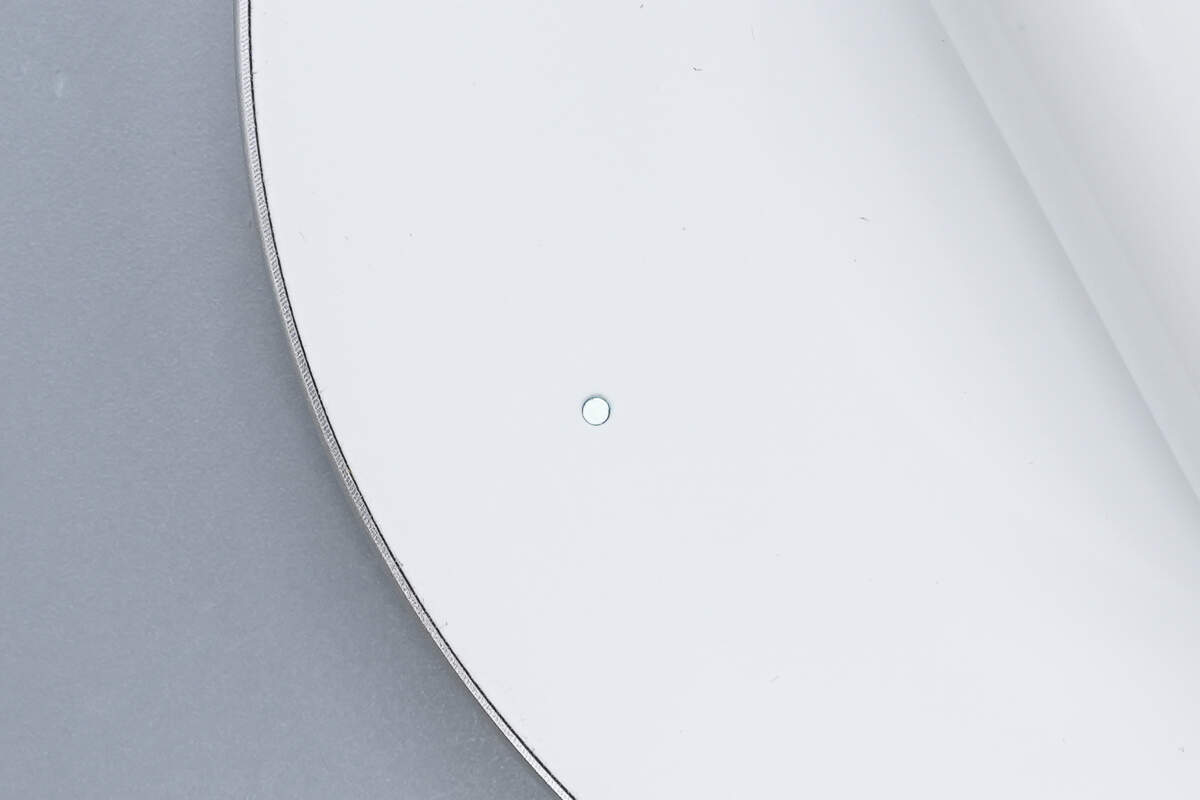
When charging normally, the LED indicator remains steadily lit. If there is a protocol mismatch or the device cannot charge properly, the LED will flash continuously.
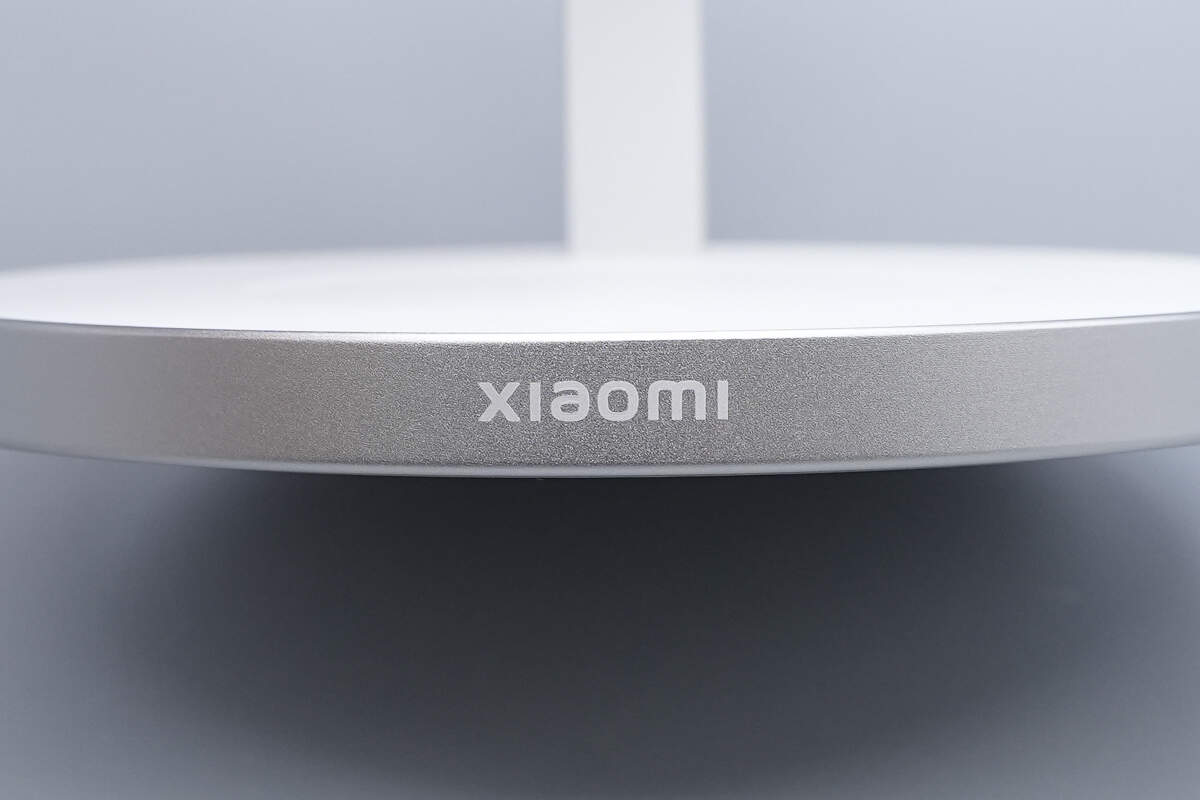
The front of the base features the Xiaomi logo.
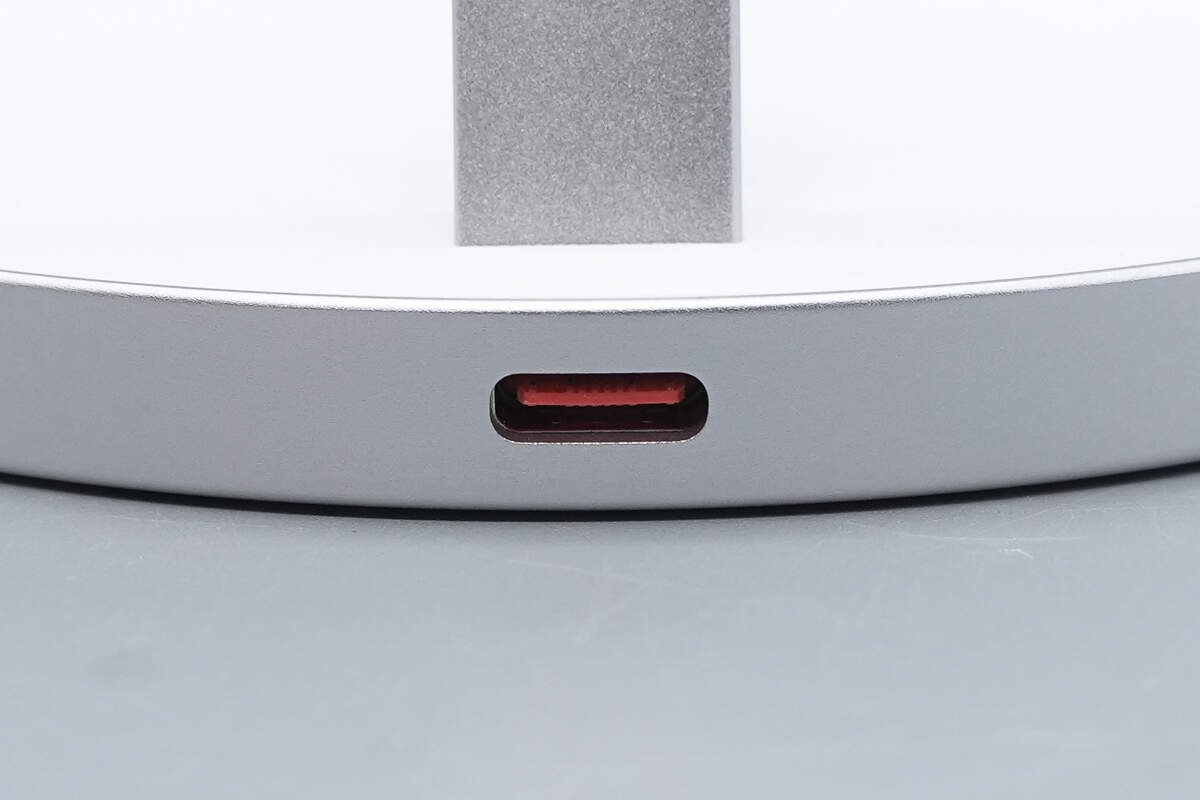
The back of the device features a USB-C input port.
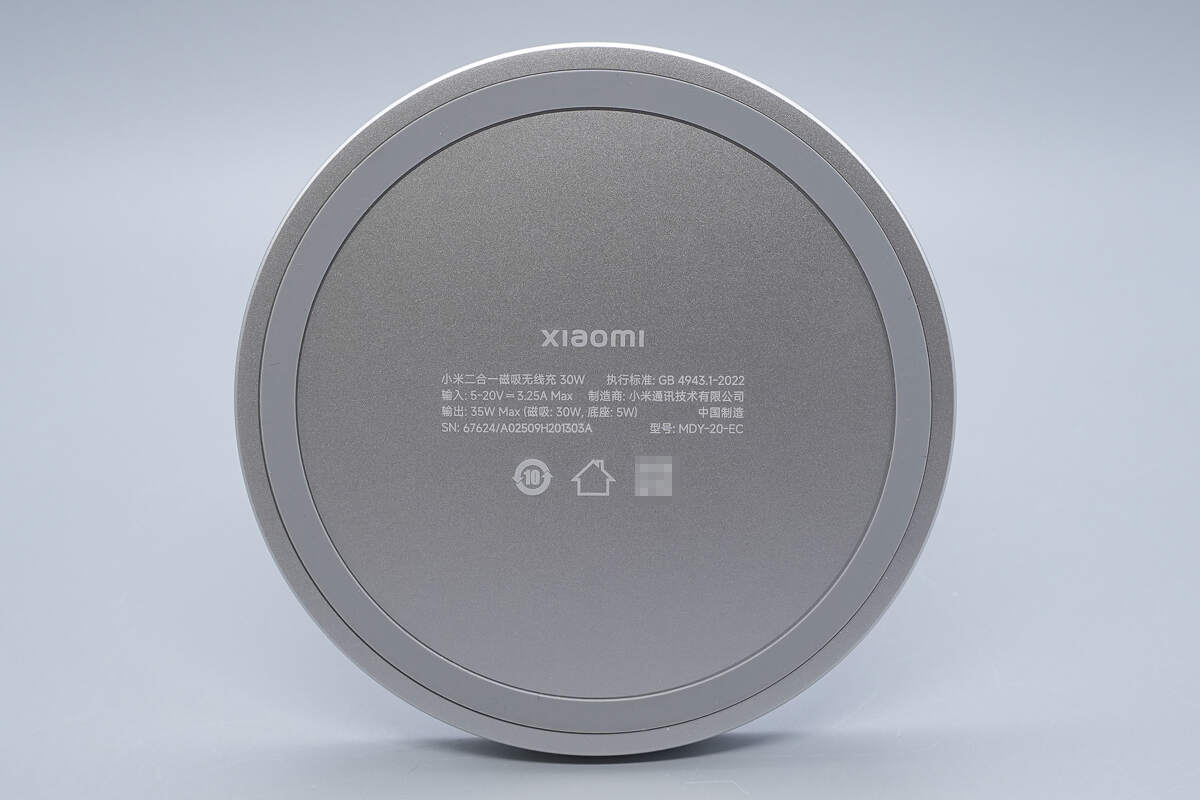
The bottom has a circular anti-slip pad, with the product specifications printed at the center.

Model: MDY-20-EC
Input: 5-20V 3.25A Max
Output: 35W Max (Magnetic: 30W, Base: 5W)
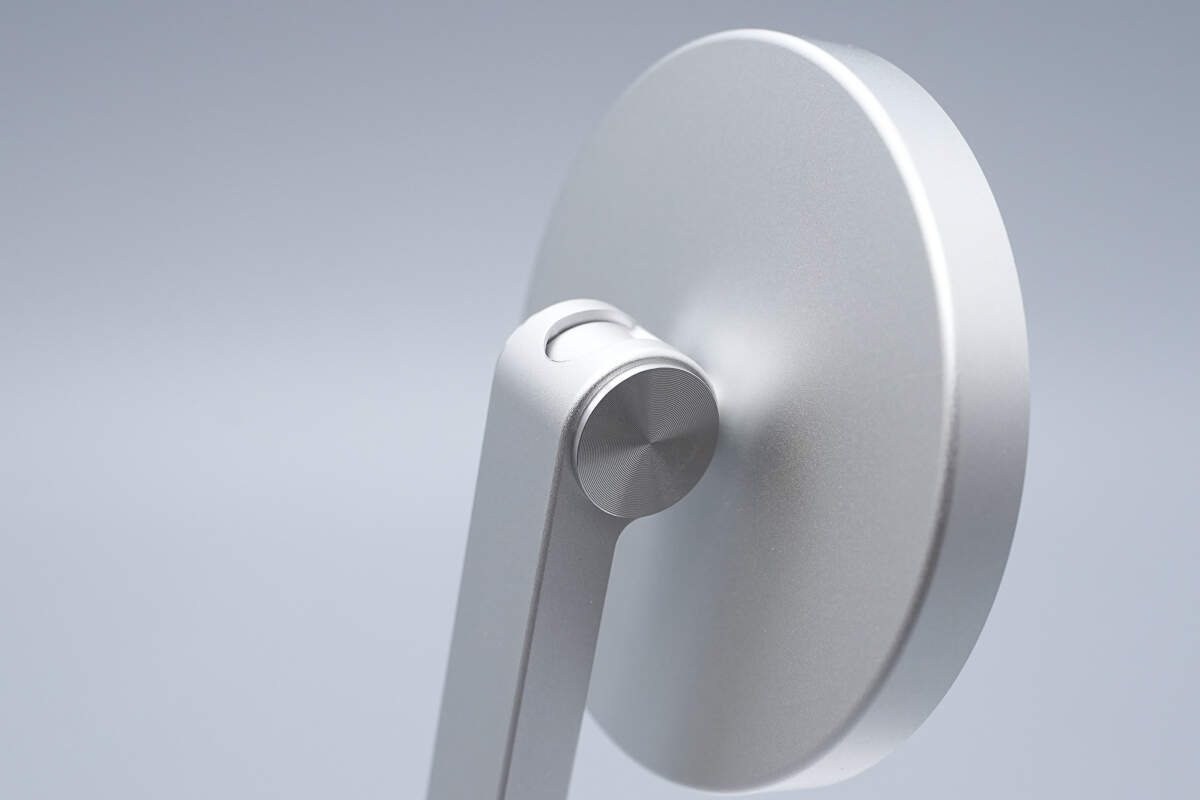
The angle at the junction between the support arm and the magnetic wireless charging panel is adjustable.
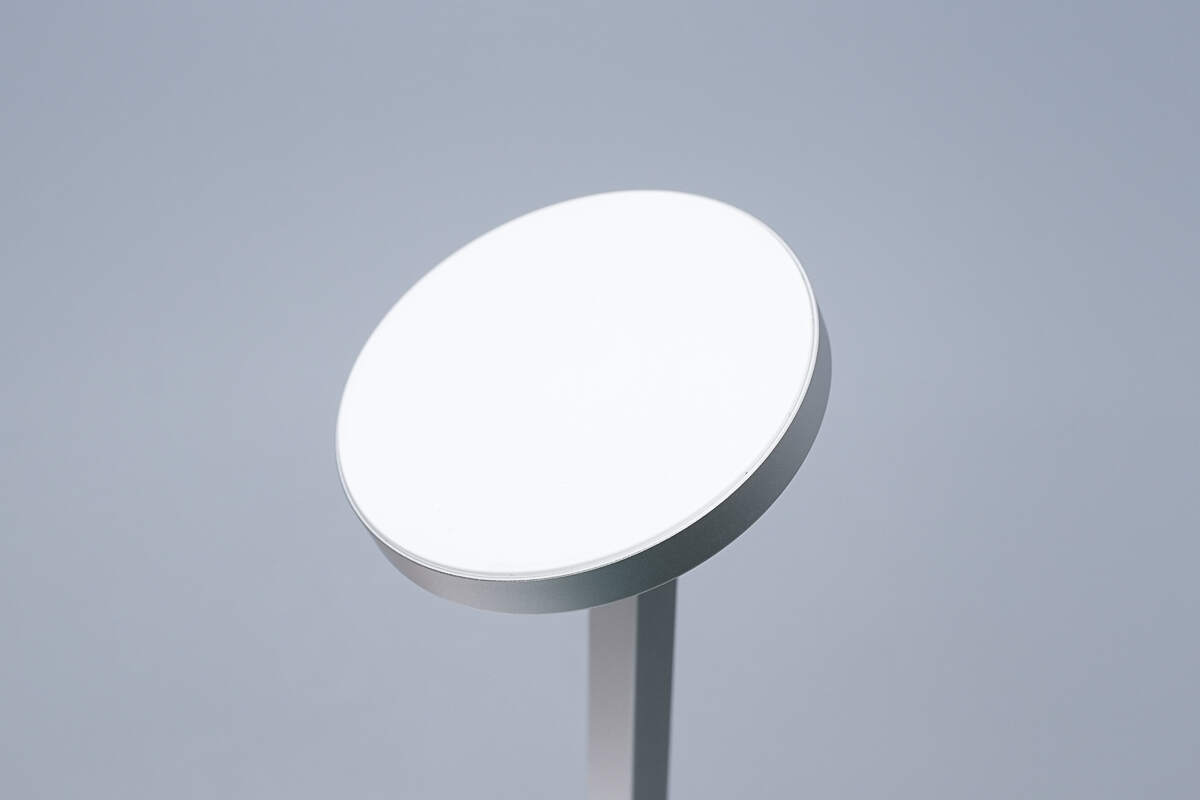
It supports angle adjustment from -20° to 50°.
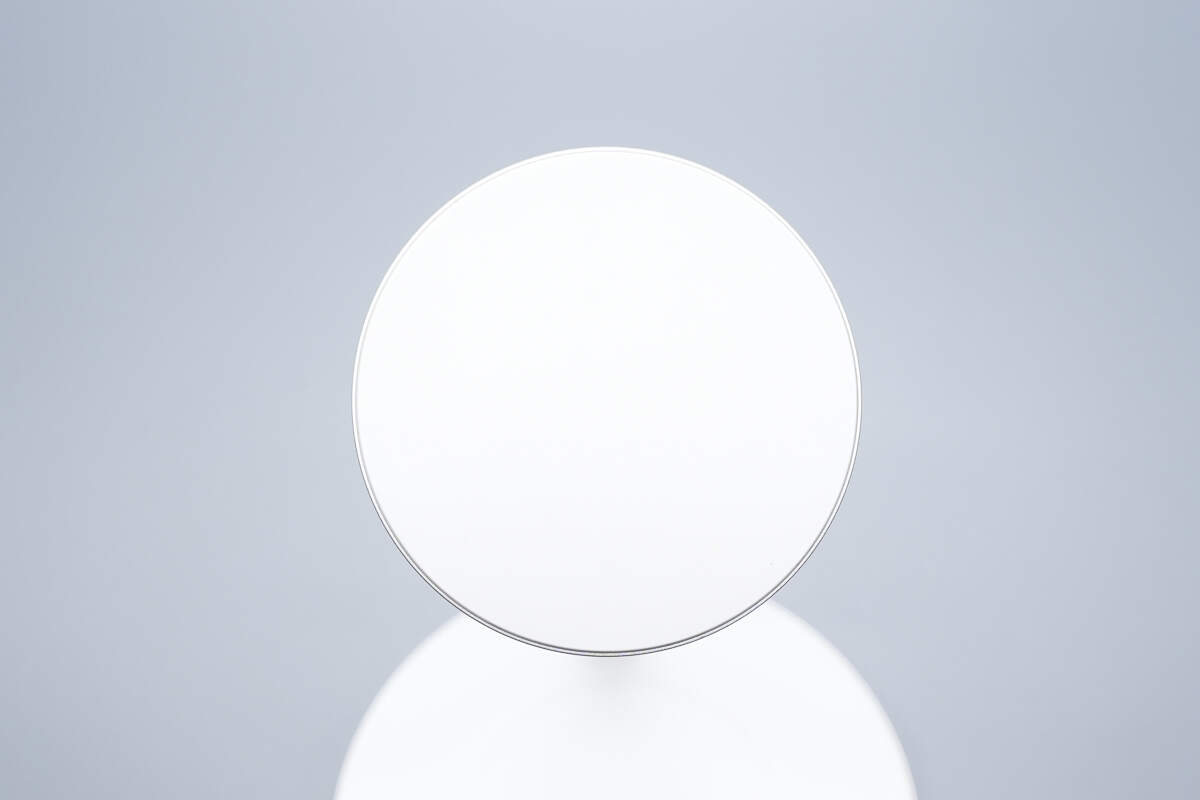
The front of the magnetic wireless charging panel is also covered with silicone material.
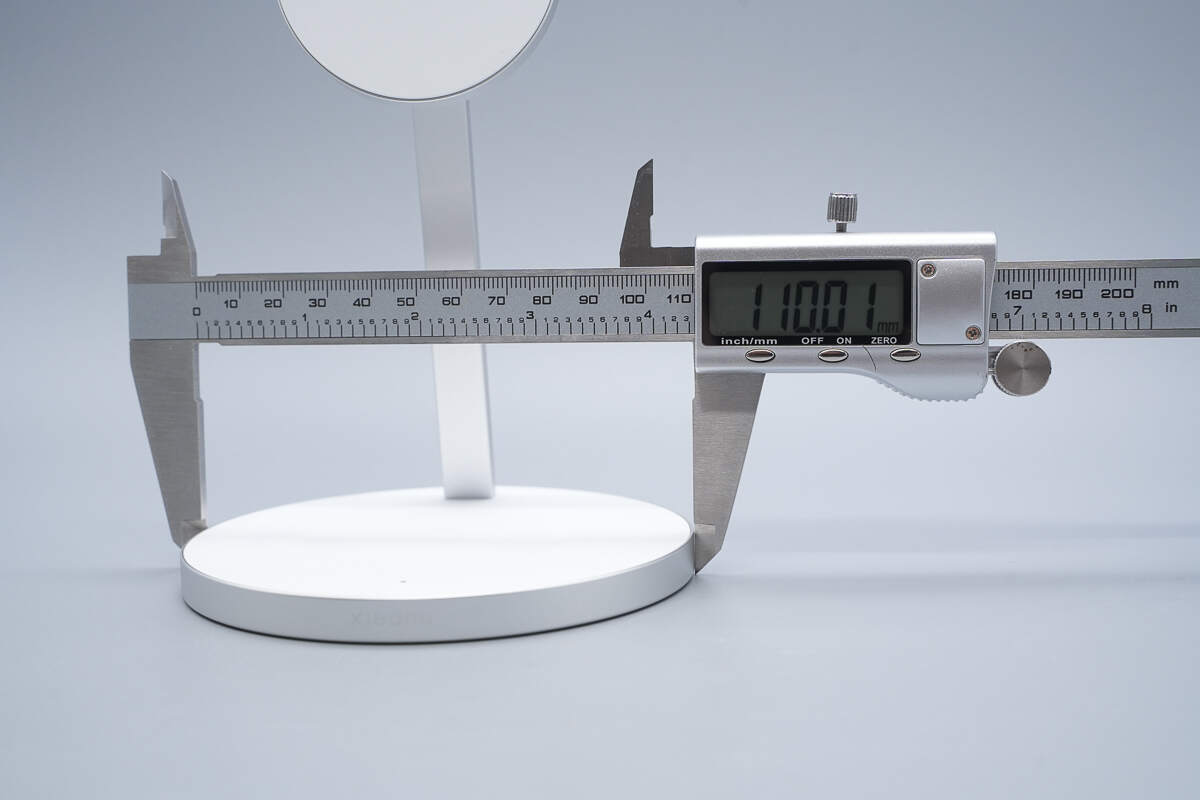
The diameter of the base is about 110.01 mm (4.33 inches).
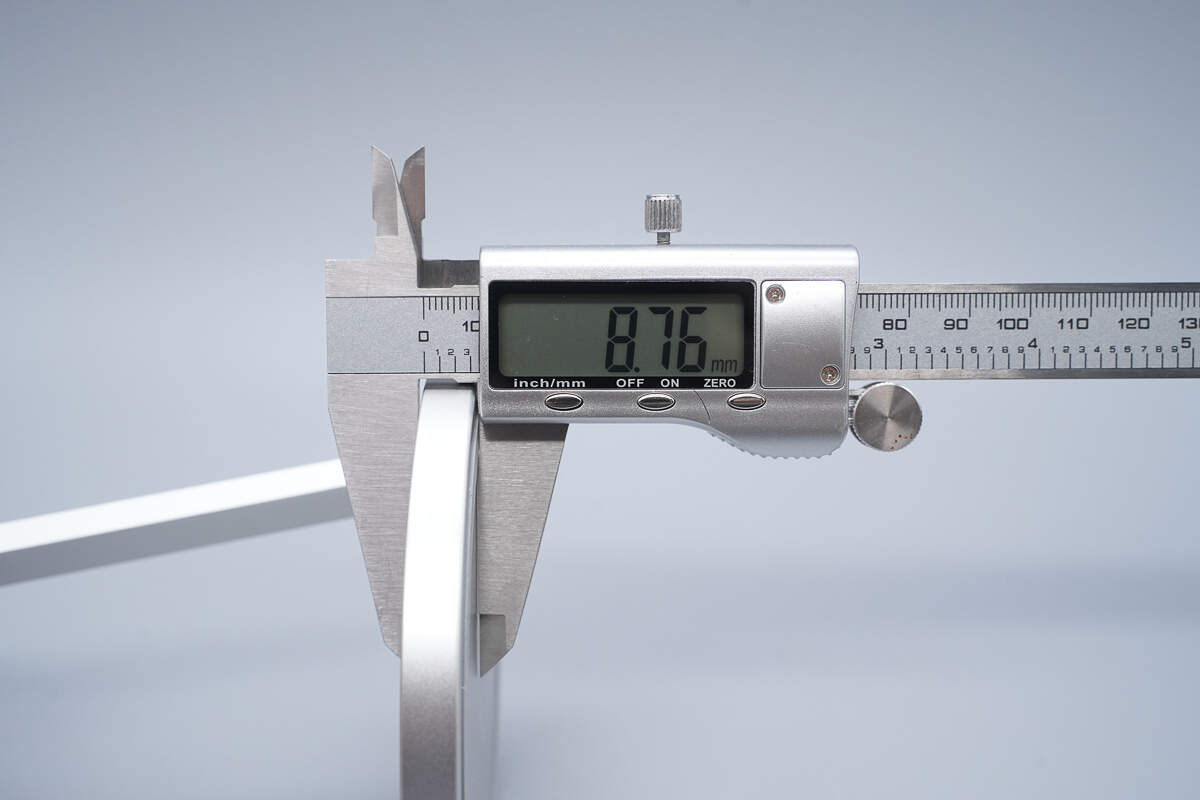
The thickness is about 8.76 mm (0.34 inches).
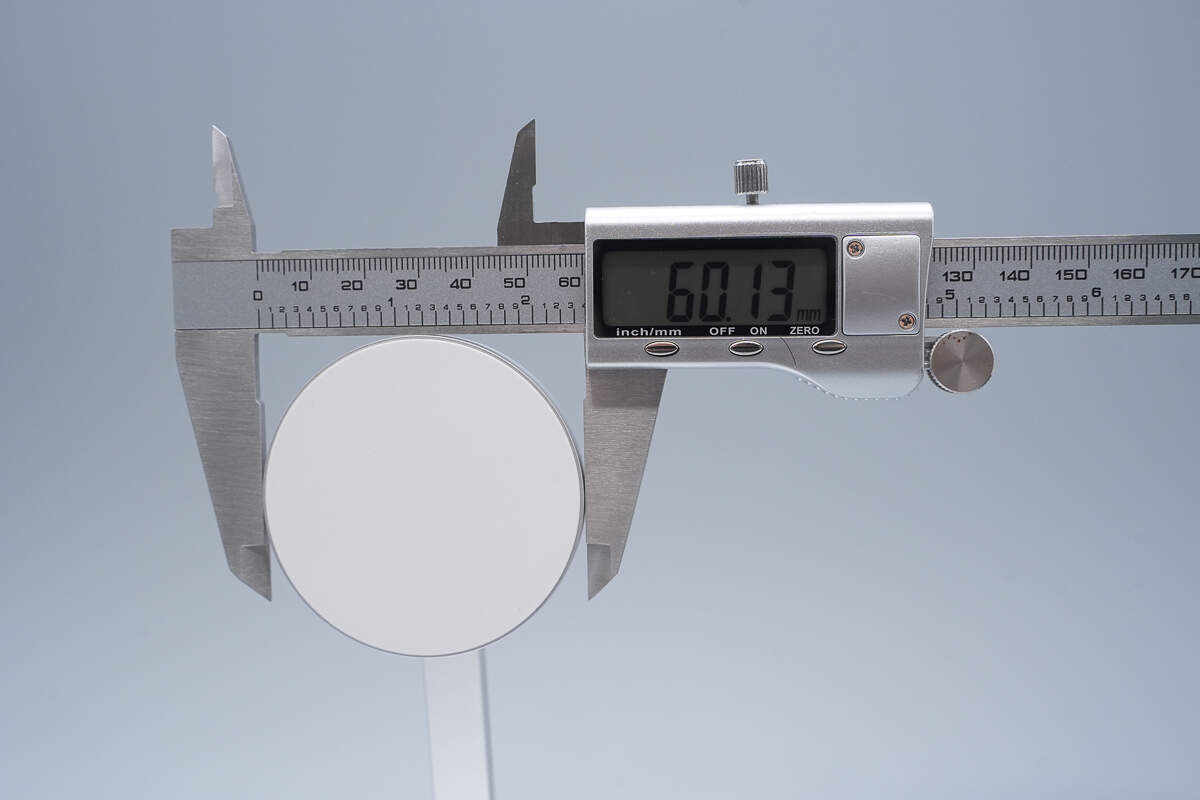
The diameter of the wireless charge panel is about 60.13 mm (2.37 inches).
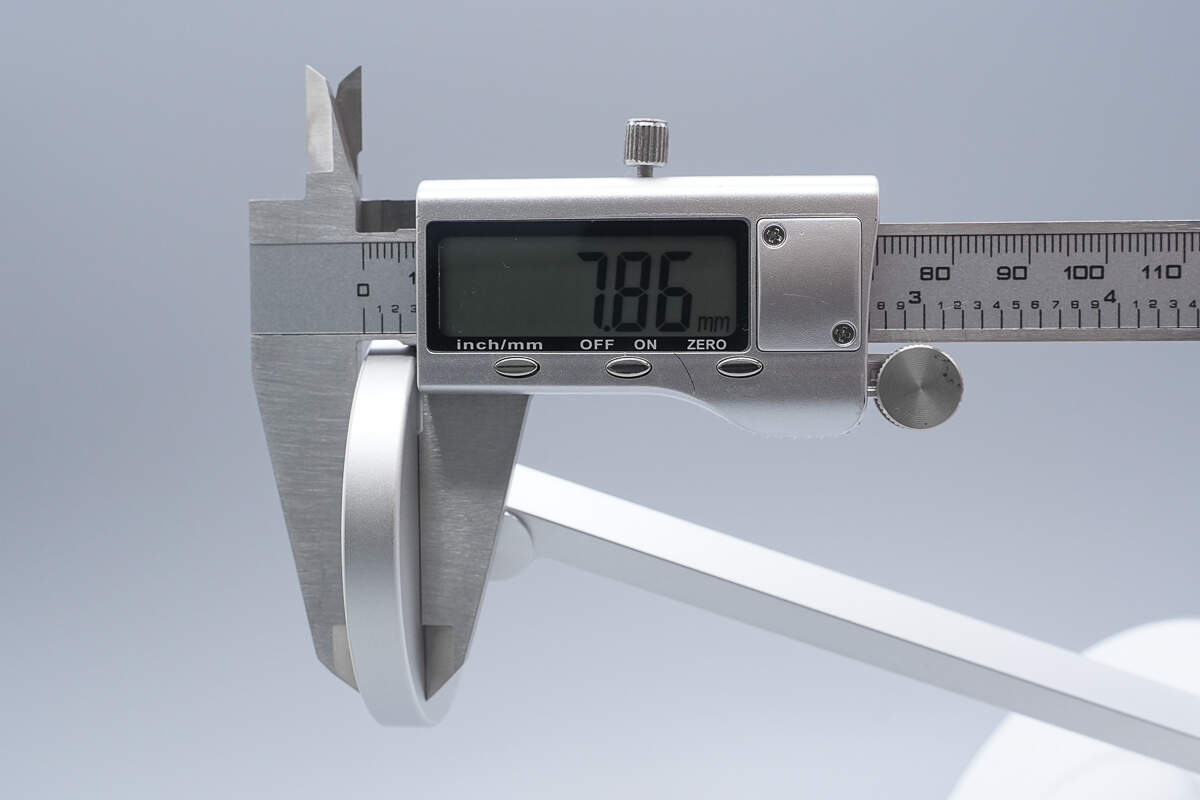
The thickness is about 7.86 mm (0.31 inches).
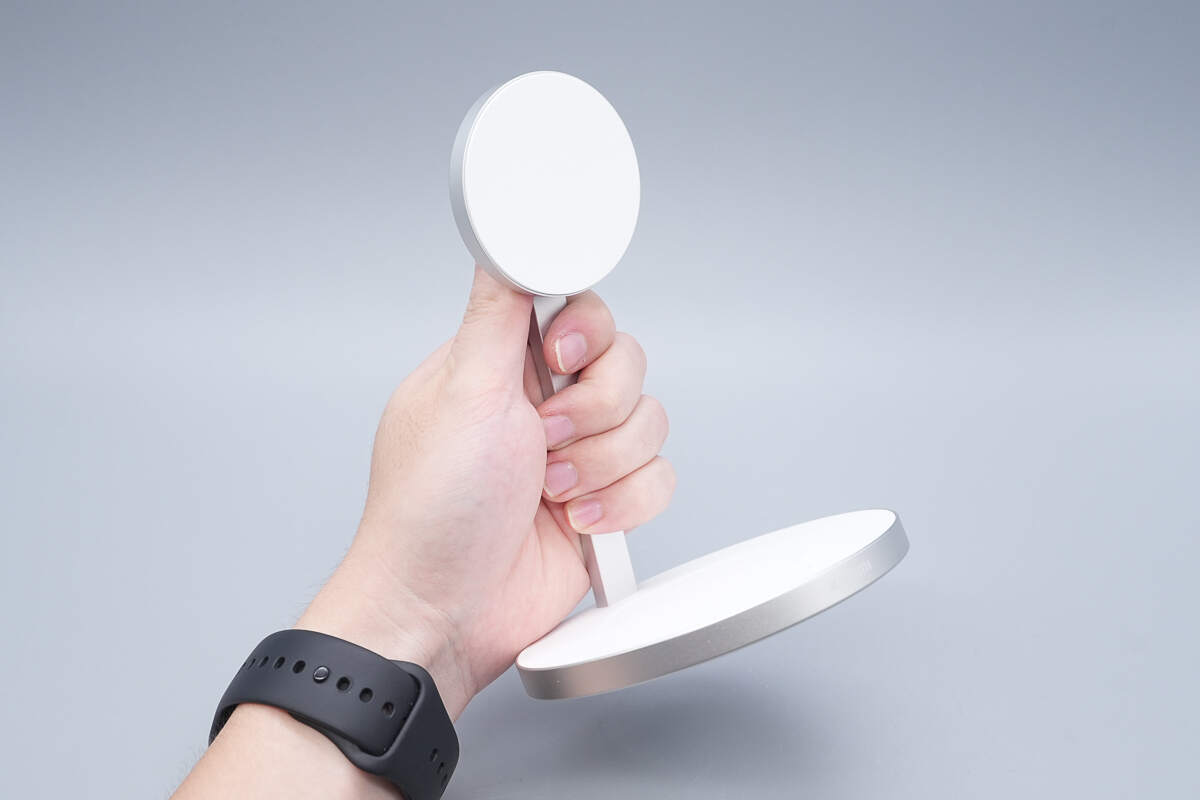
That's how big it is in the hand.
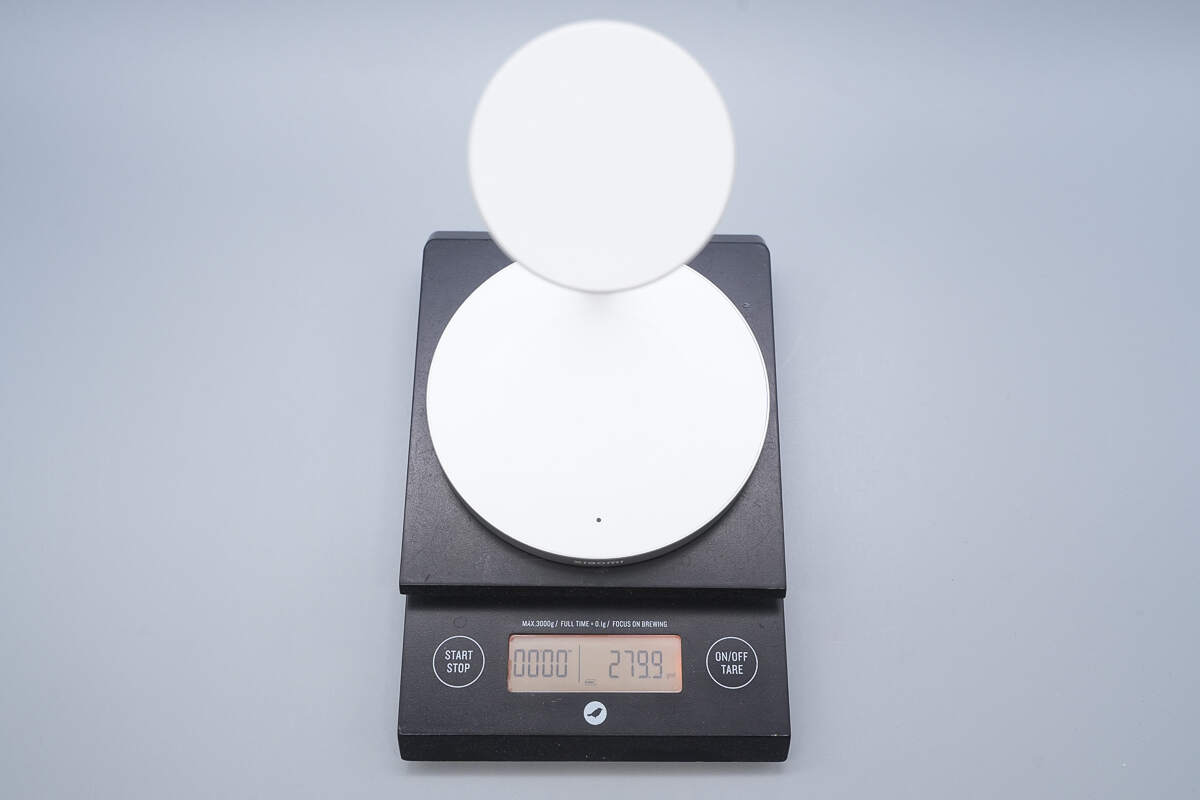
The weight is about 280 g (9.88 oz).
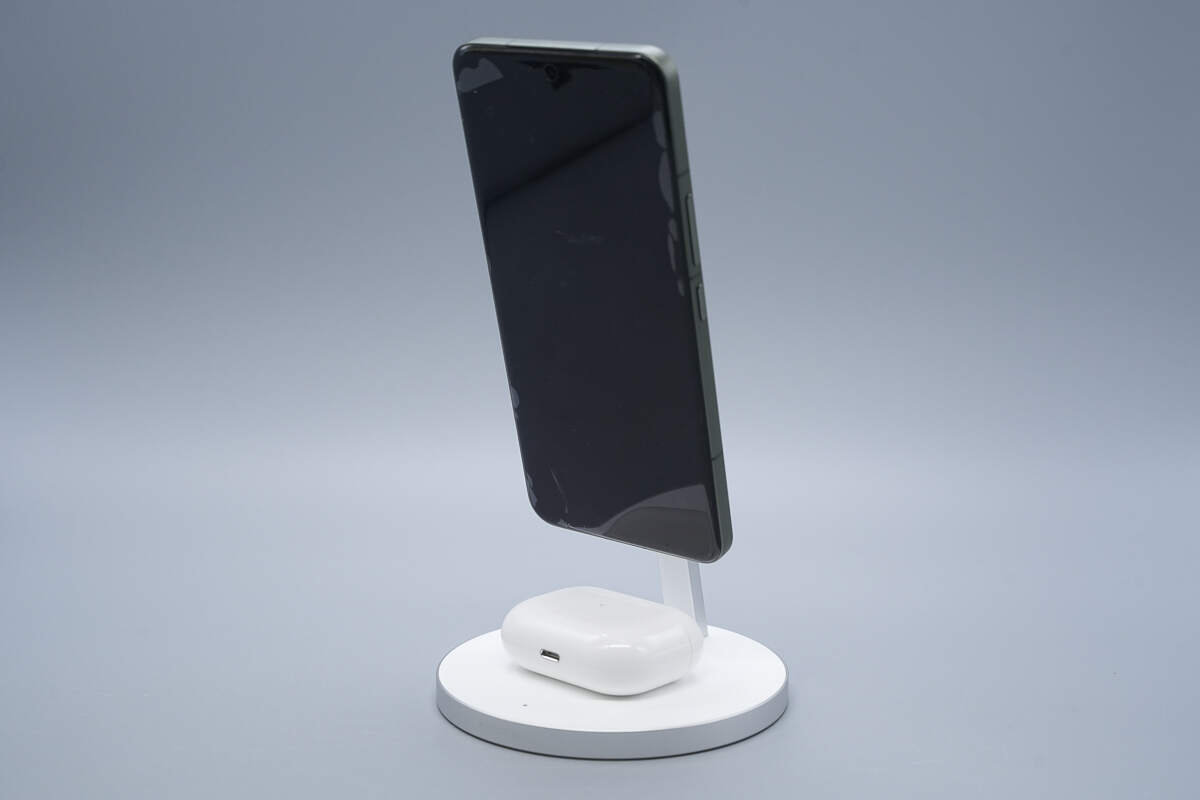
Even when the phone is attached at a -20° angle, it remains stable and does not fall off.
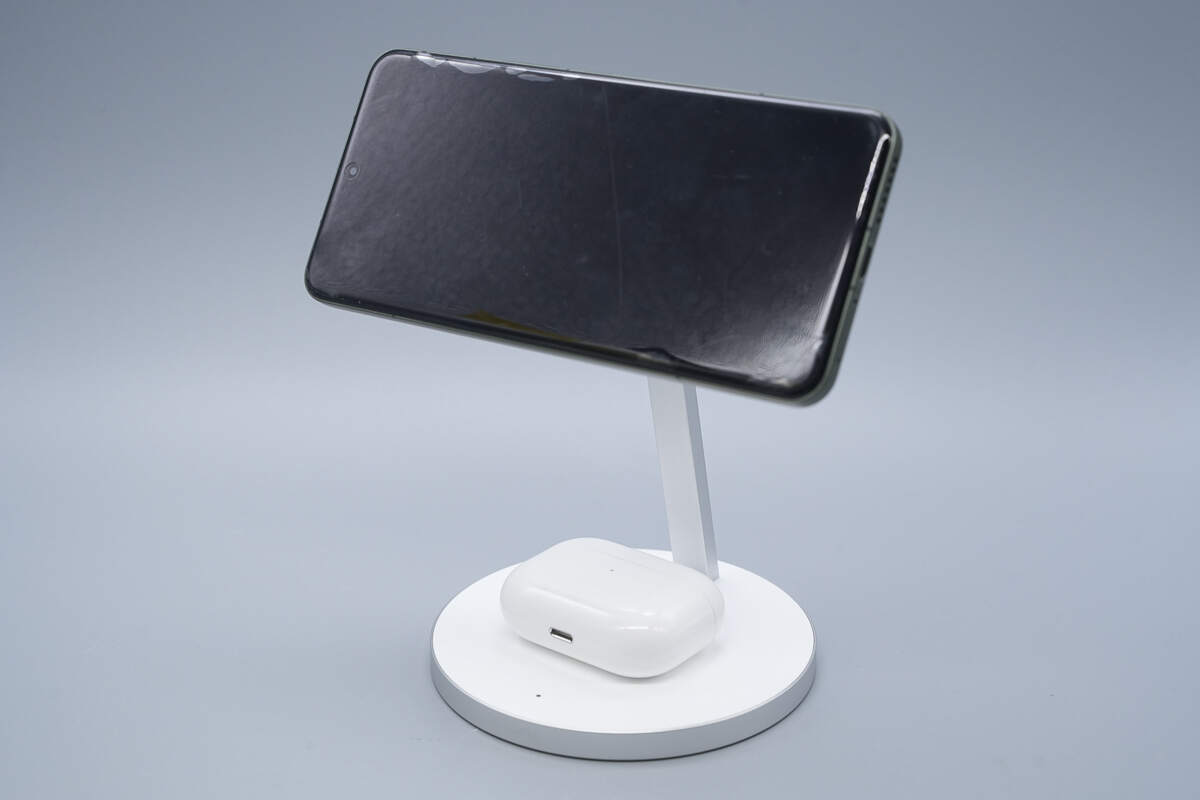
The phone can also be placed horizontally, and it remains stable.
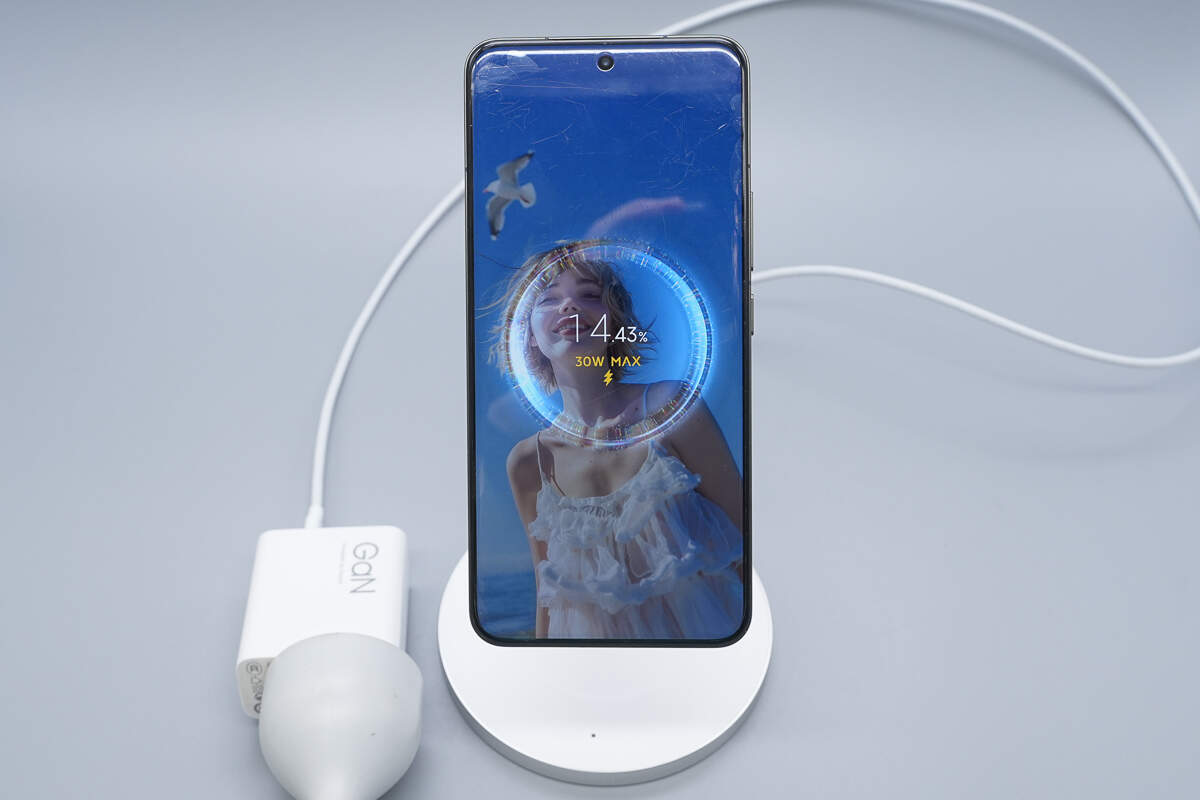
Charging the Xiaomi 15 Pro via the magnetic wireless charging panel successfully activates 30W fast wireless charging on the phone.
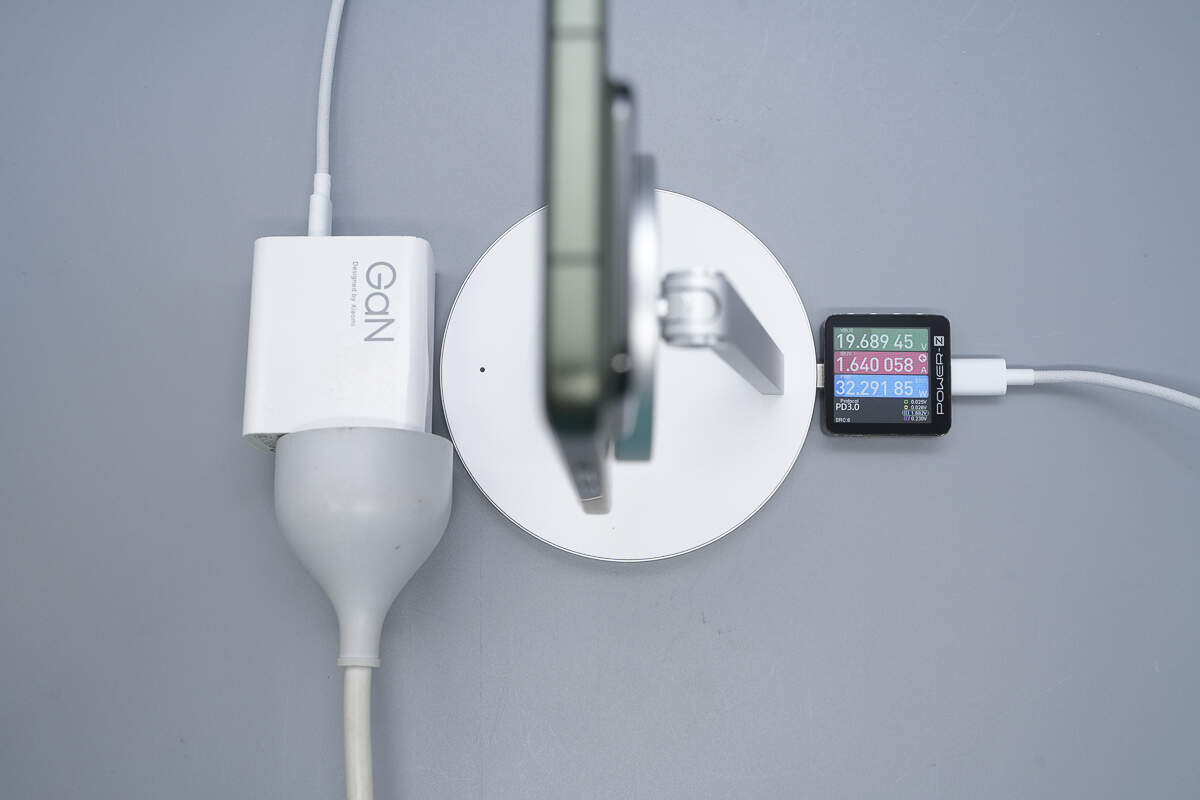
At this moment, the input power is about 32.29W.
Teardown
Next, let's start to take it apart and take a look at the internal components.
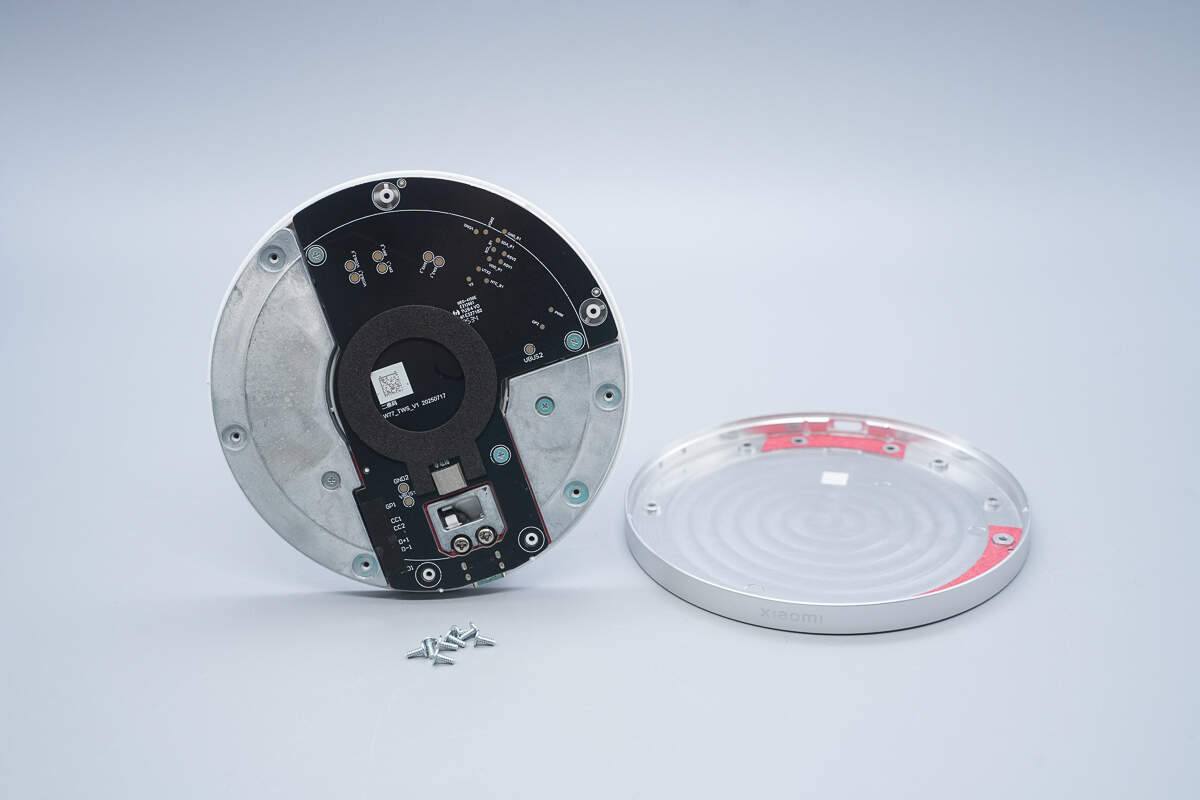
There are screws hidden beneath the anti-slip pad on the base; removing them allows the outer casing to be opened.
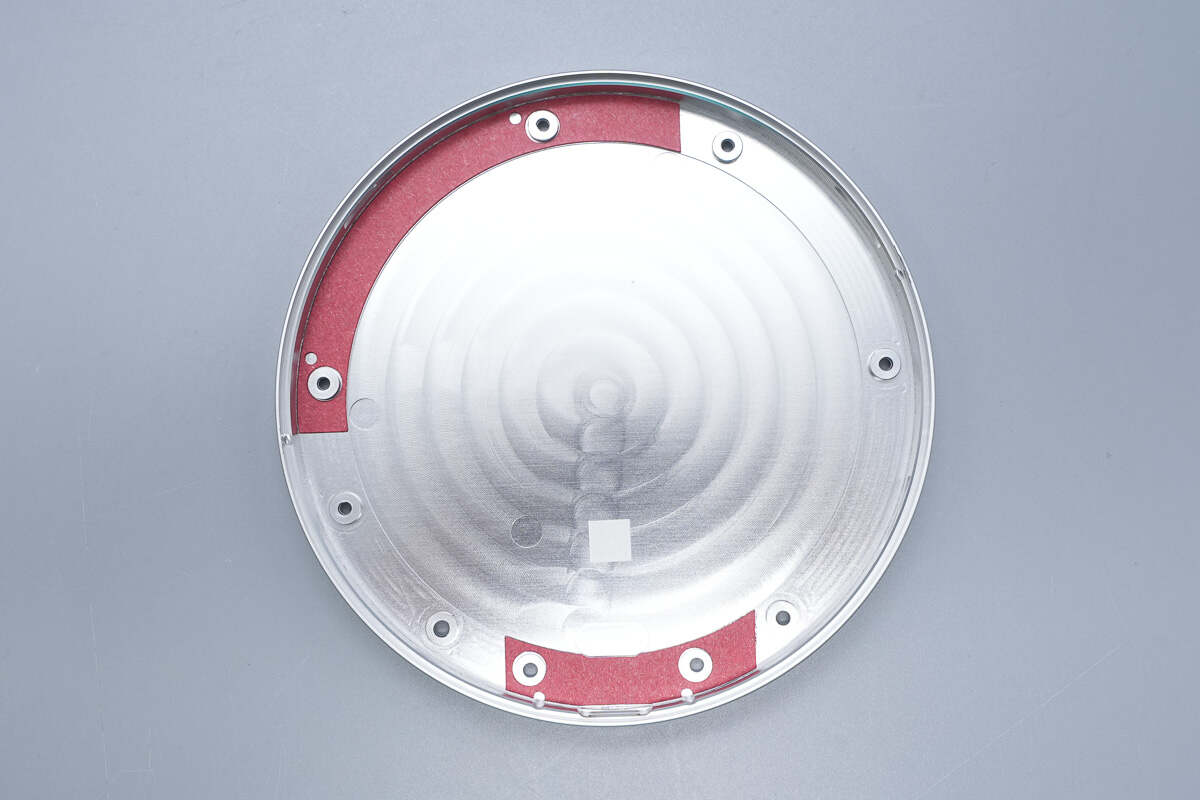
Red insulating paper is applied to the inner side of the metal casing, aligned with the edge areas of the PCB.
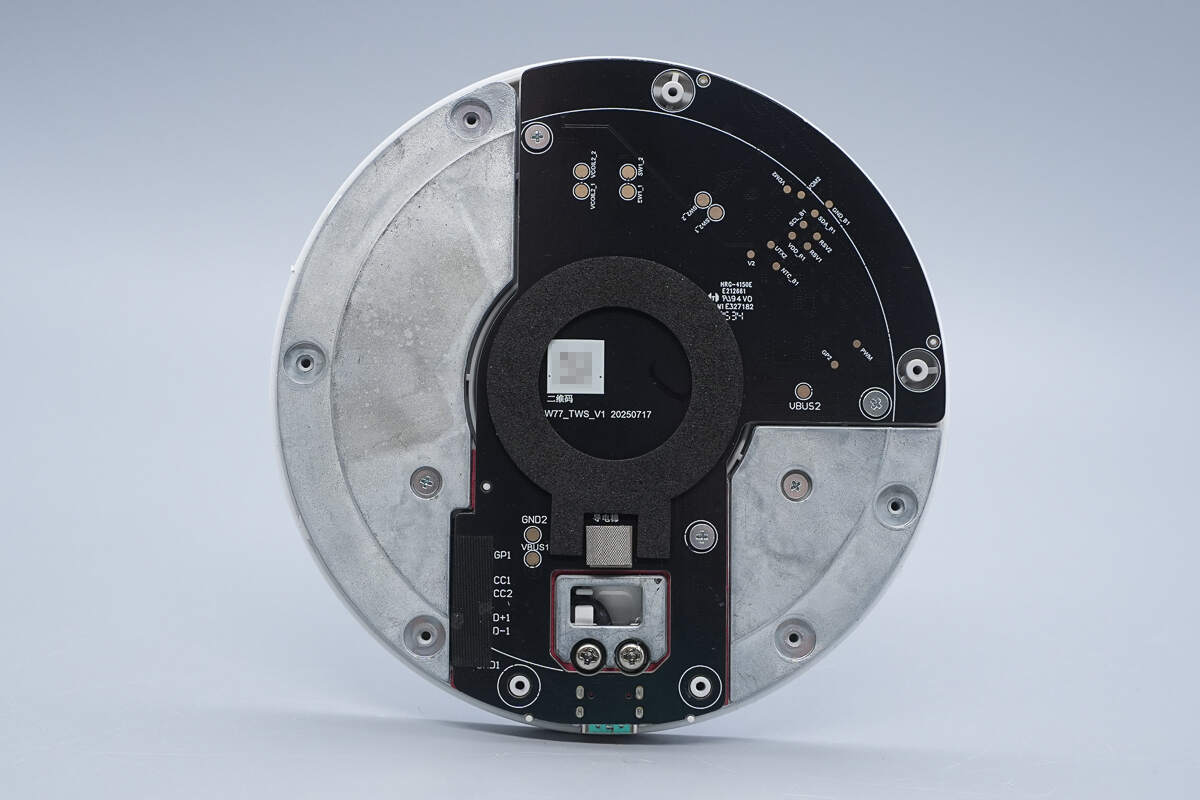
The PCB inside the base has an irregular shape. The remaining space is occupied by two counterweights, precisely shaped to fit the internal structure.
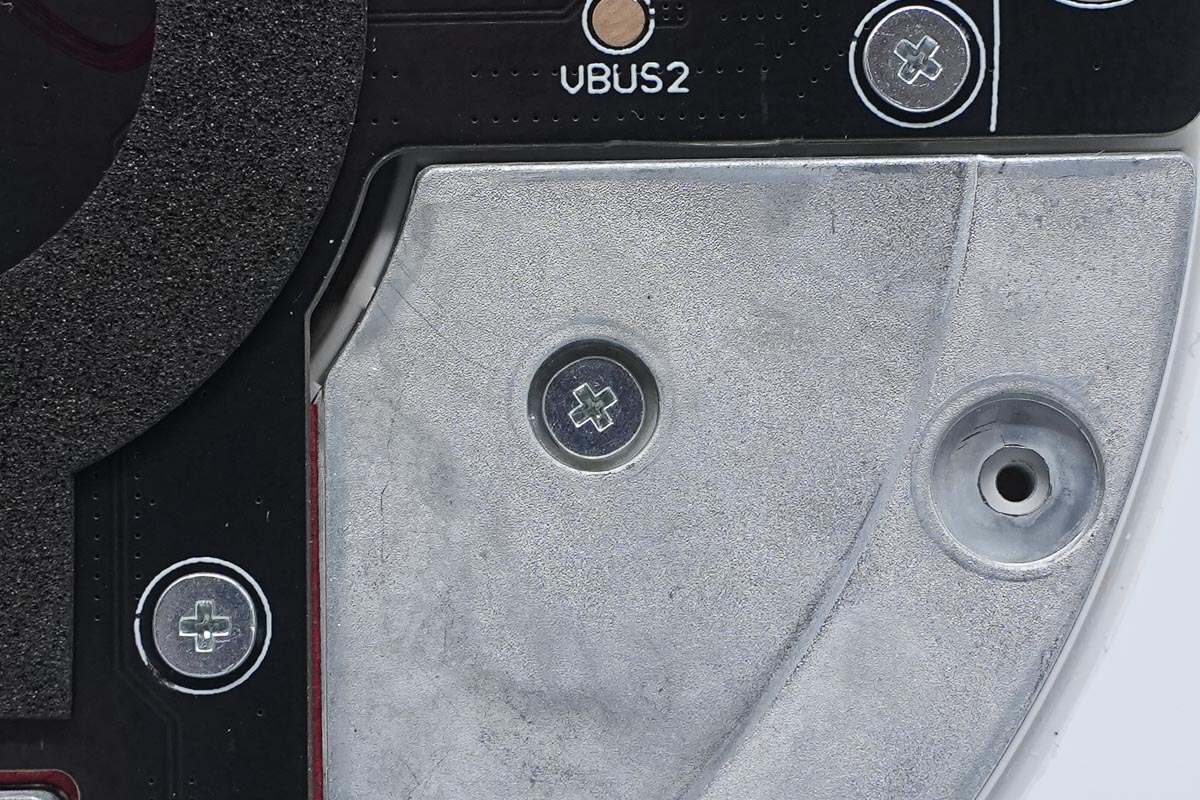
Both the PCB and the two counterweights are secured with screws.
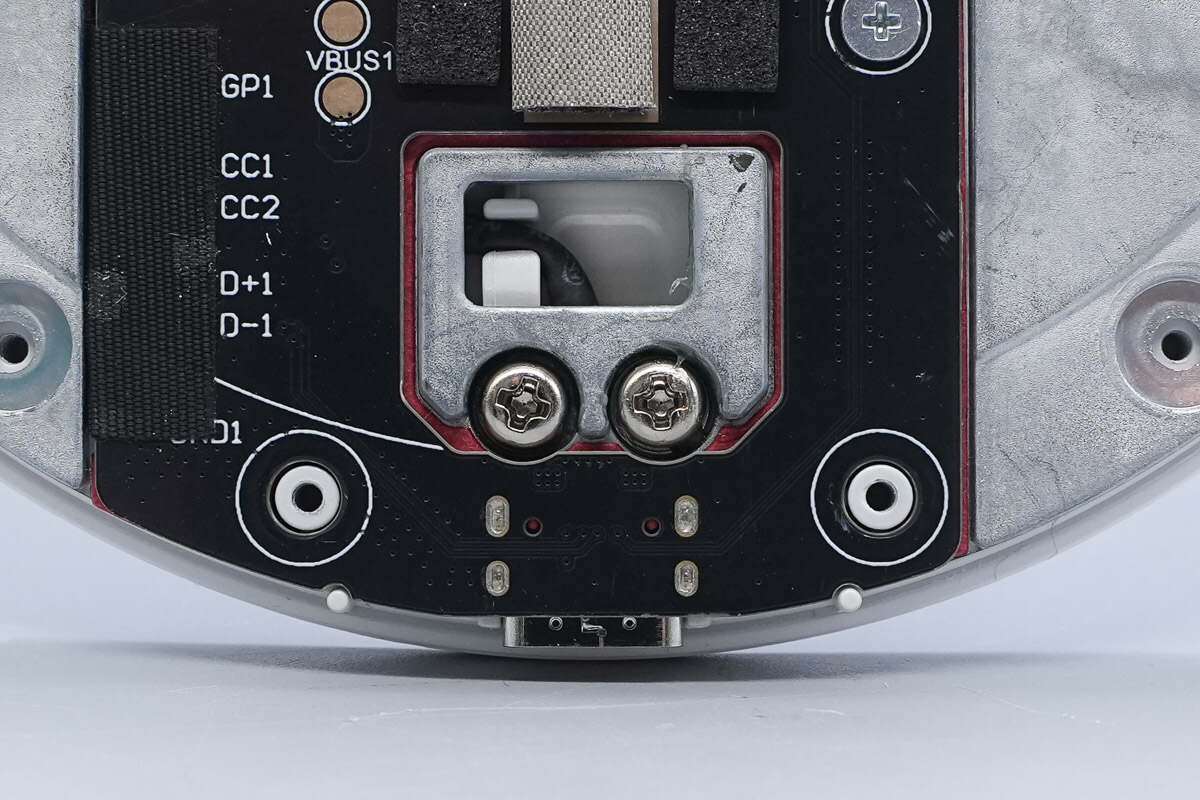
The support arm is secured to the base with screws.
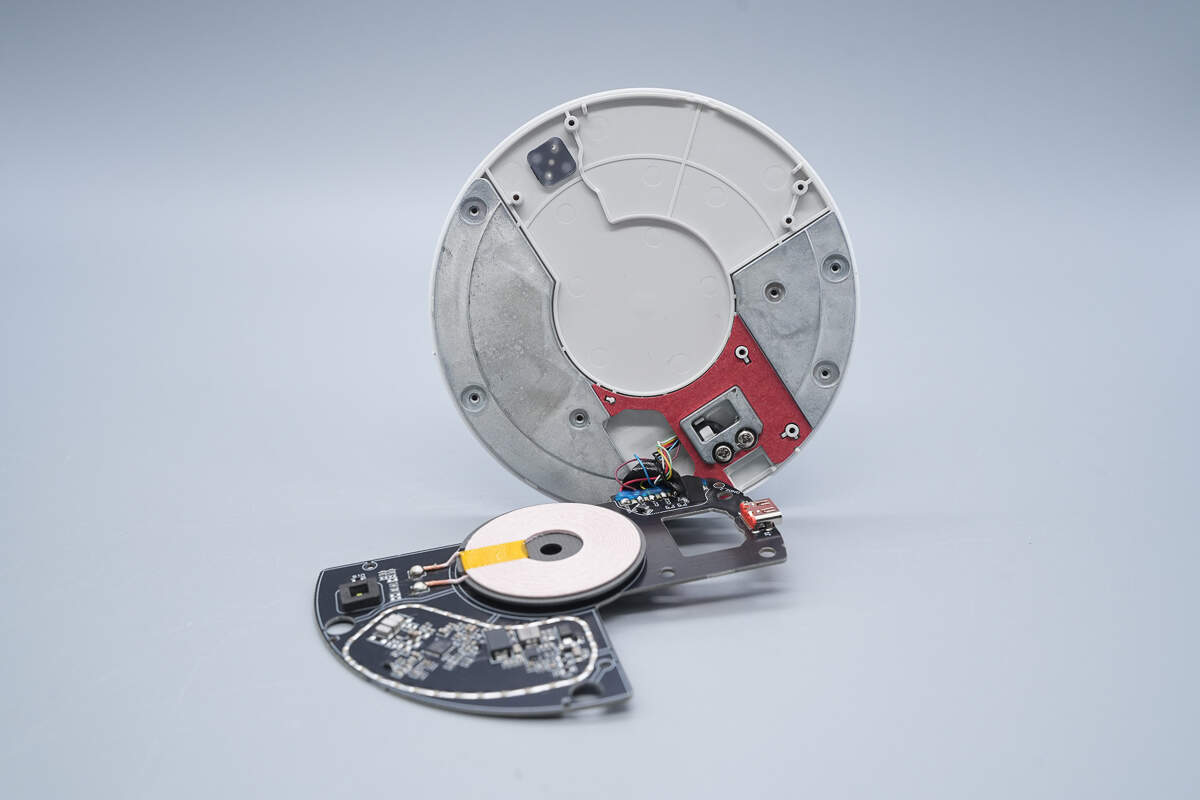
Remove the screws to take out the PCB.
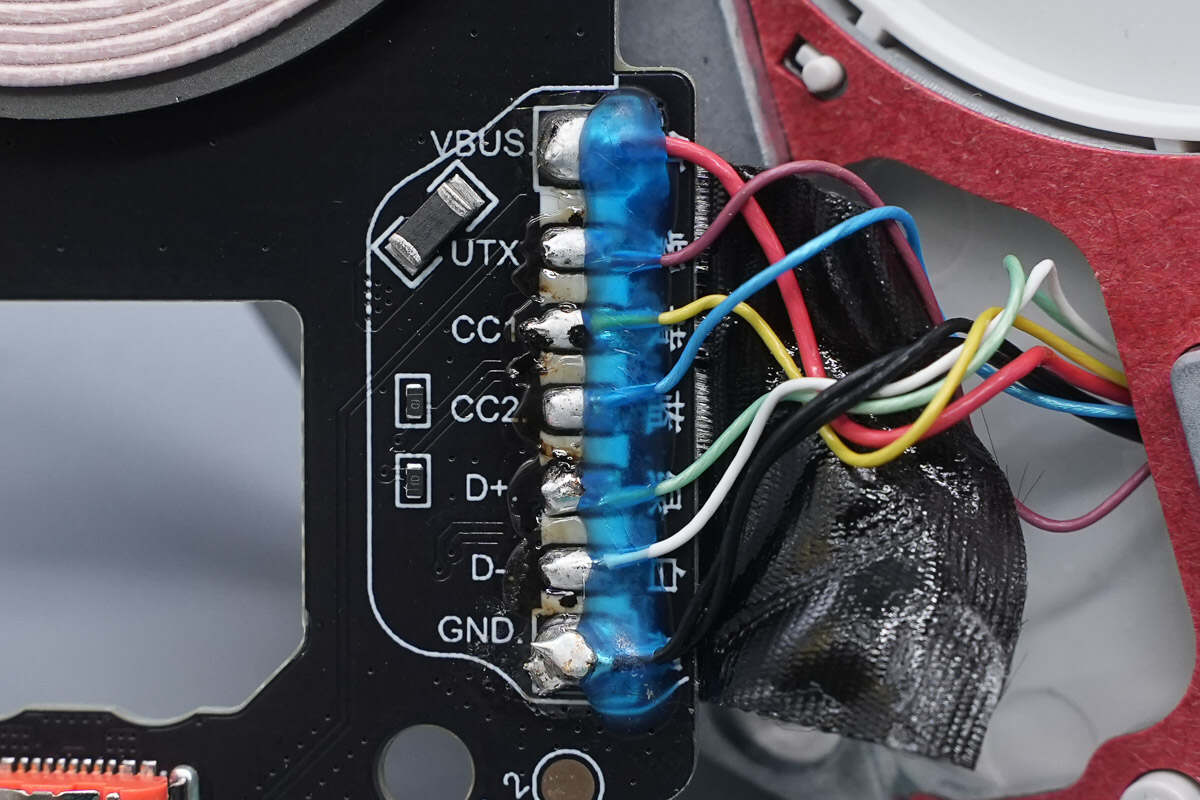
The charging panel is connected to the PCB via a set of wires.
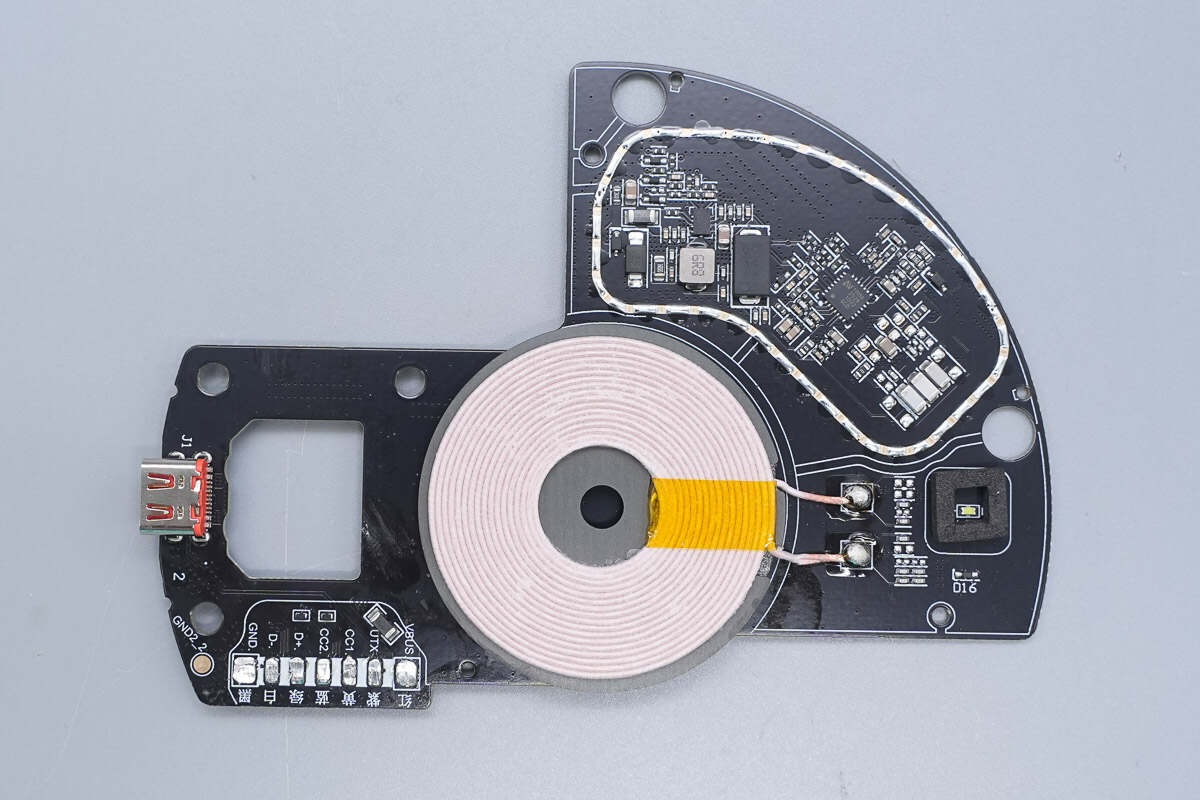
The front side of the PCB features components such as a reverse protection diode, synchronous buck converter, buck inductor, a wireless charging IC, and NPO resonant capacitors.
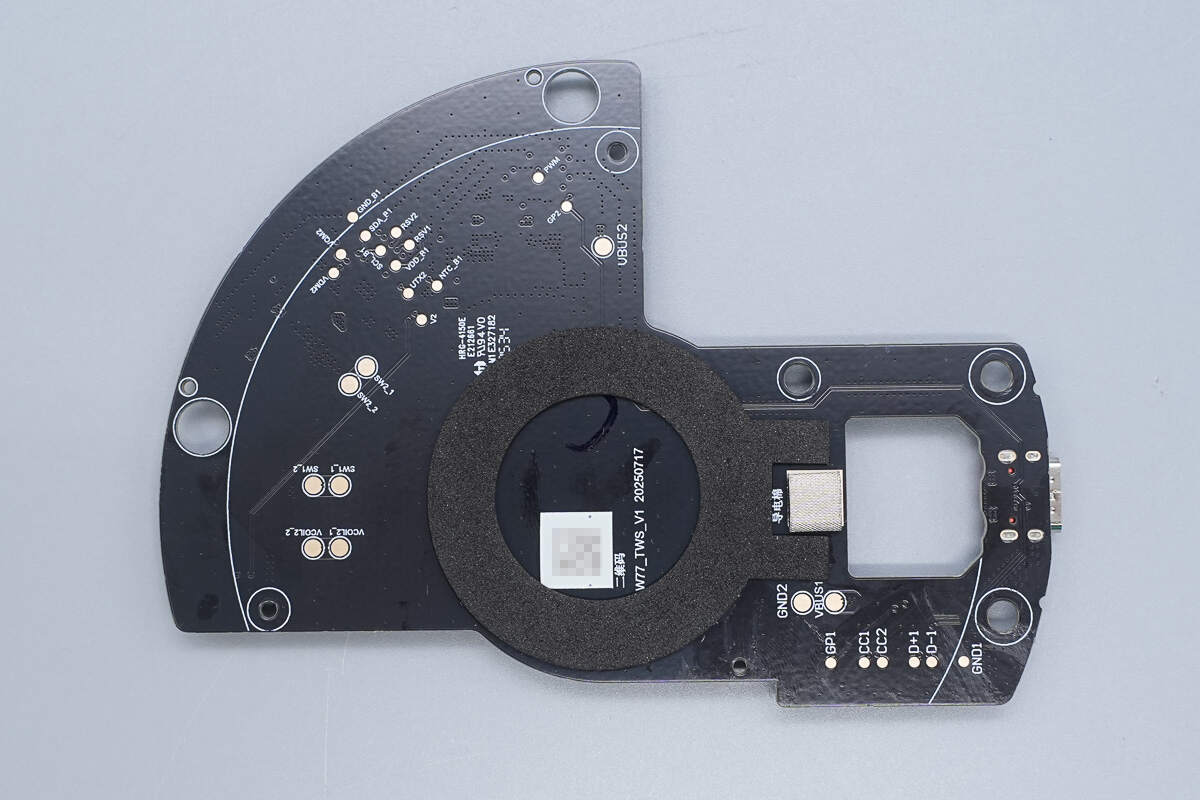
The back side is lined with foam padding and conductive fabric.
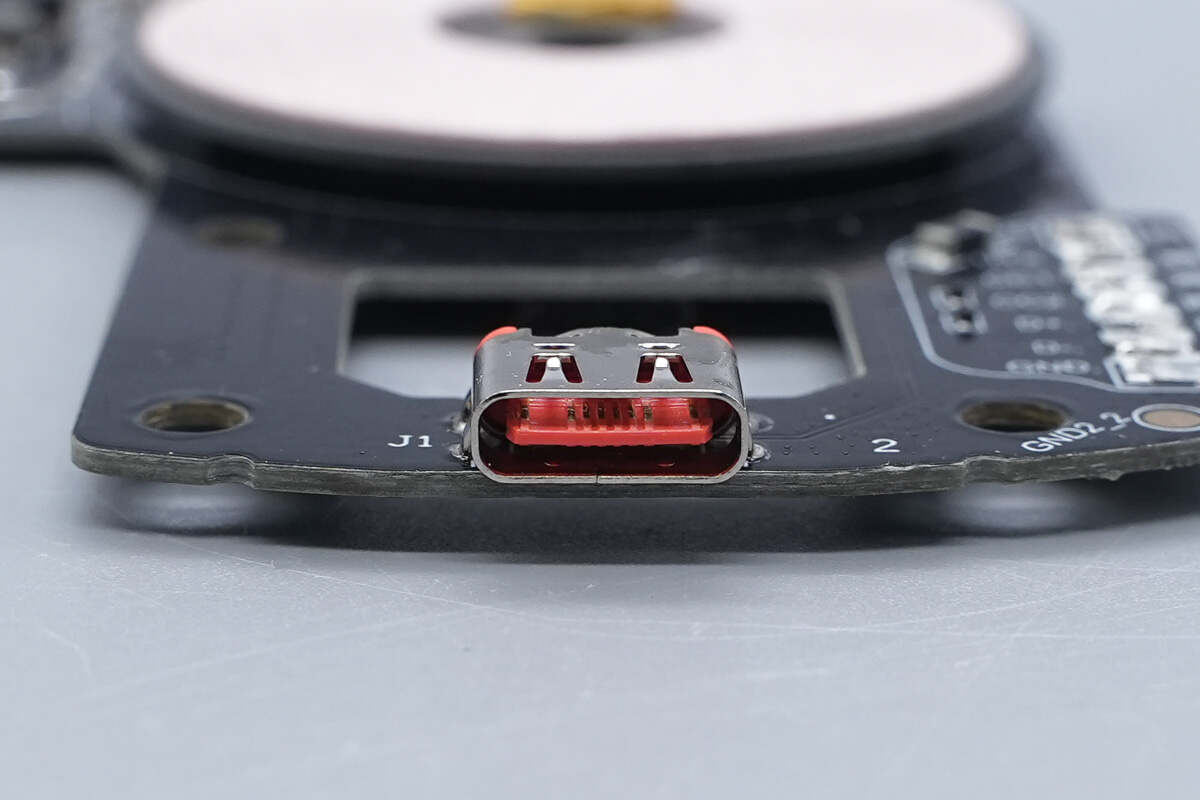
The USB-C socket is soldered through via-hole mounting.
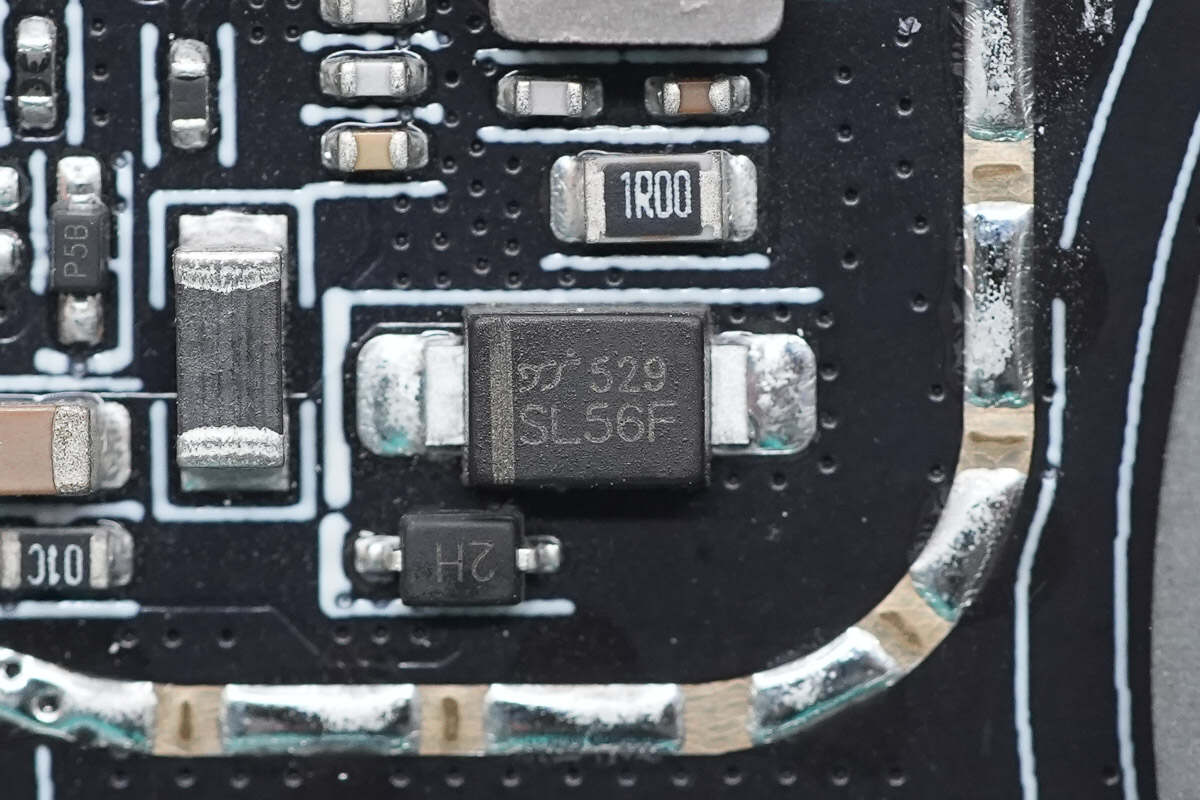
The SL56F diode used for reverse protection is manufactured by YJ.
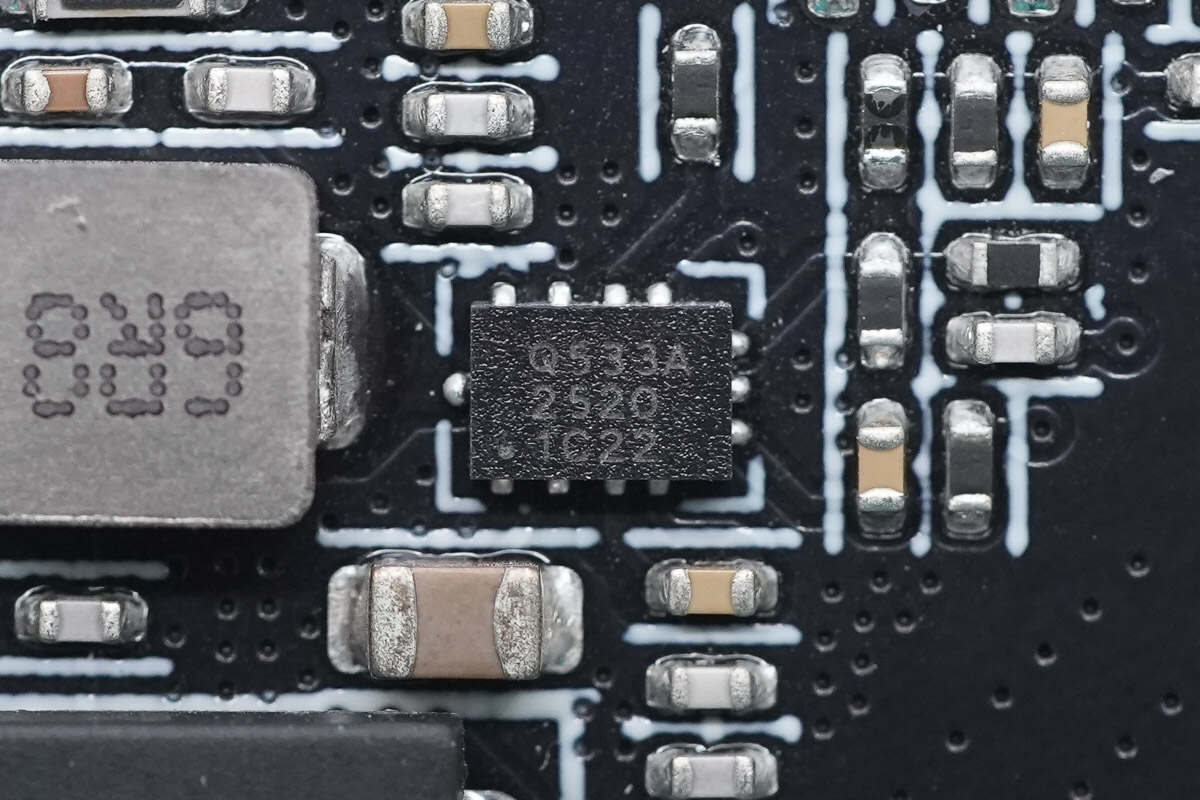
The synchronous buck converter is marked with Q533A and comes in a QFN package.
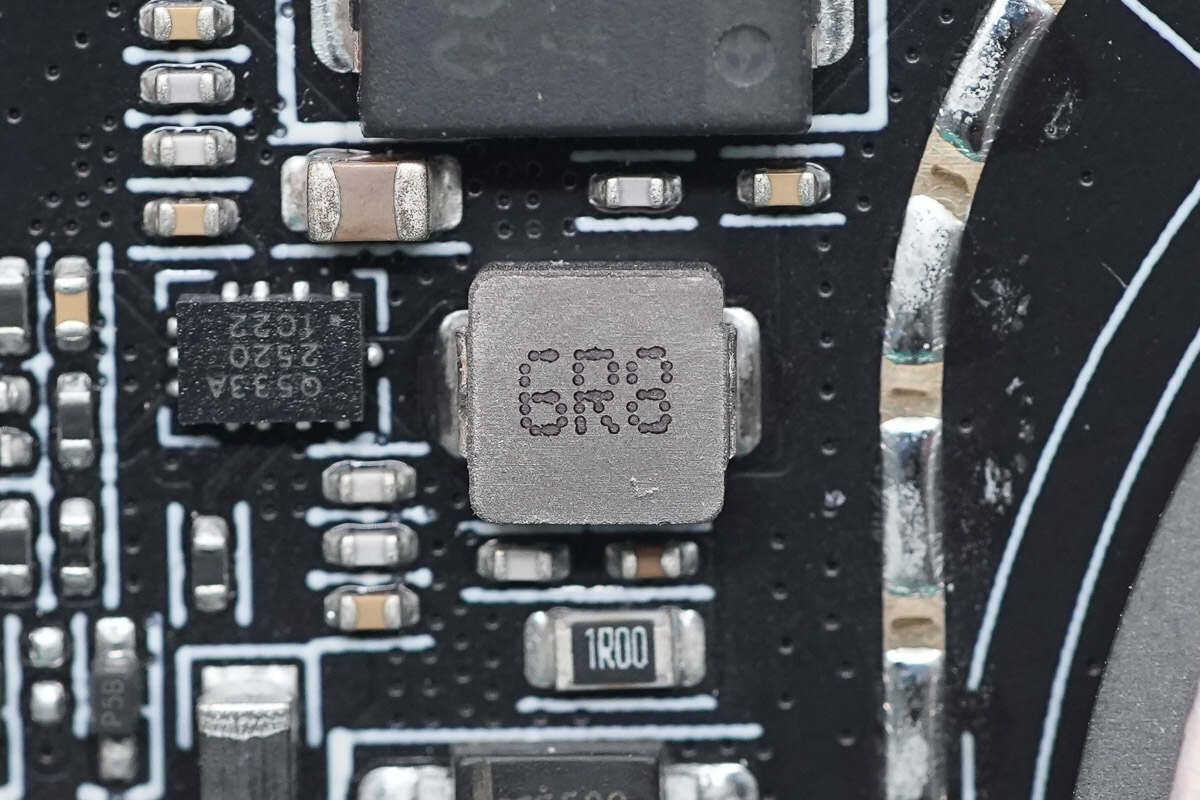
Close-up of the paired 6.8μH buck inductor.
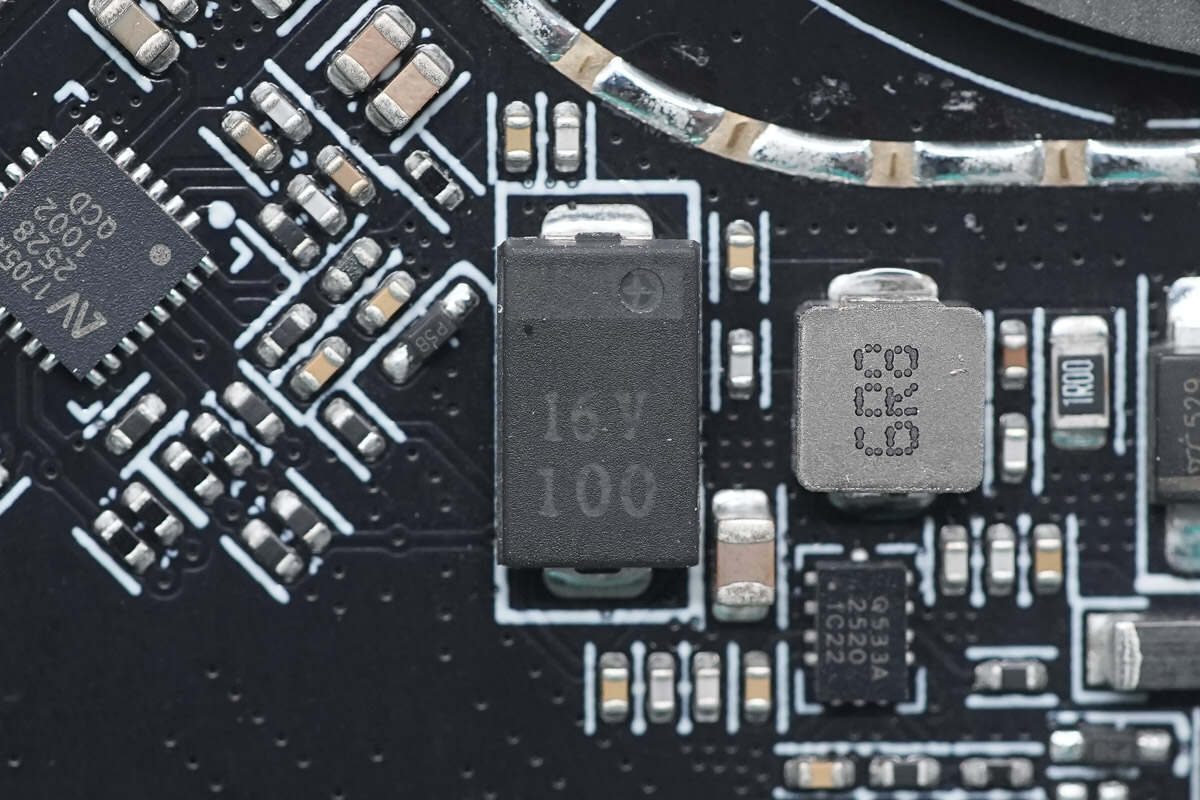
The filtering capacitor is manufactured by BERYL and belongs to the SV standard miniaturized series of multilayer conductive polymer aluminum capacitors. It is rated at 16V 100μF and is characterized by excellent ripple current tolerance and environmental compliance (halogen-free, RoHS, and REACH compliant). This type of capacitor is well-suited for use in applications such as servers, laptops, artificial intelligence systems, drones, solid-state drives, and wireless chargers.
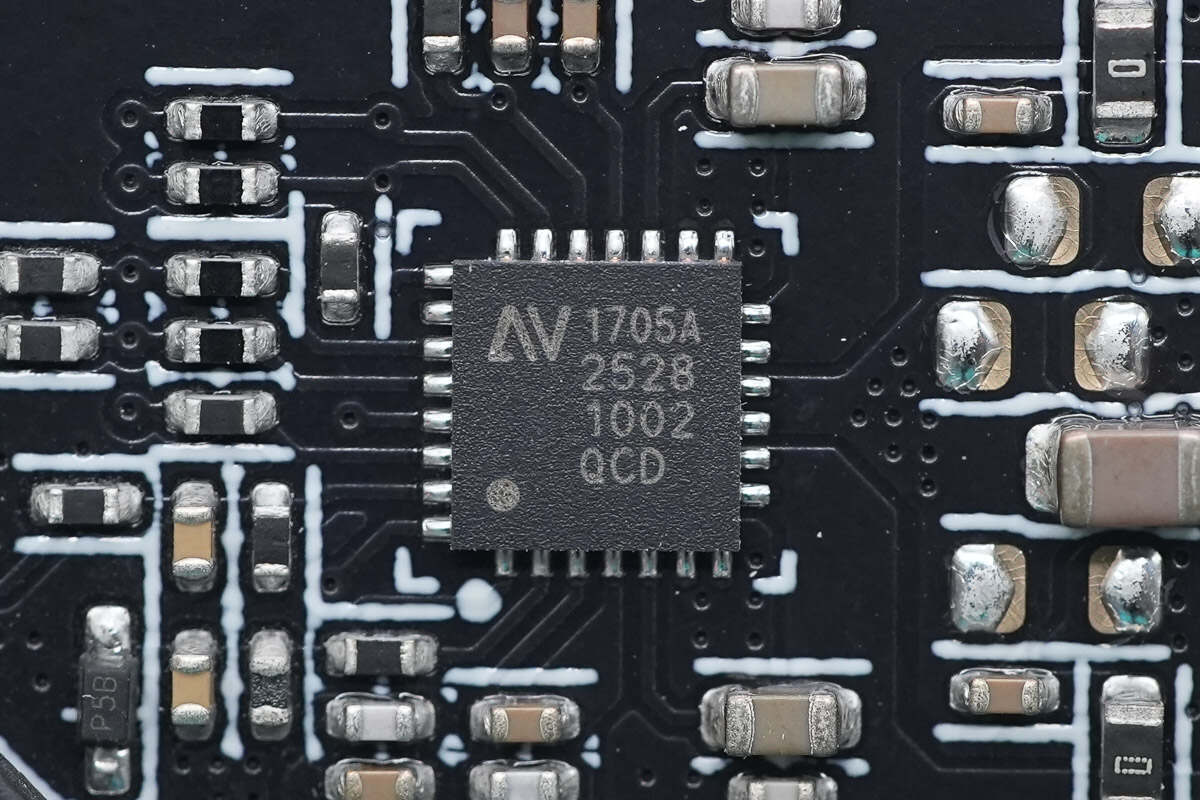
The wireless charging chip is the NU1705A from NuVolta. It integrates a full-bridge power stage architecture suitable for wide frequency ranges along with a 32-bit MCU core. The chip also includes all critical functional modules, such as high-efficiency power MOSFETs, low-EMI FET drivers, bootstrap circuitry, integrated 4.8V/1.8V LDOs, and lossless current sensing technology.
Its patented current sensing circuitry provides accurate current readings, supporting features such as foreign object detection (FOD), power measurement, in-band communication, Q-factor detection, and digital demodulation. The chip is equipped with multiple protection mechanisms, including input undervoltage lockout, overvoltage protection, overcurrent protection, NuVolta’s proprietary “Juggle Protection” dynamic circuit, and thermal shutdown. These features significantly enhance the reliability of the overall system solution. It comes in a 4mm × 4mm QFN package.
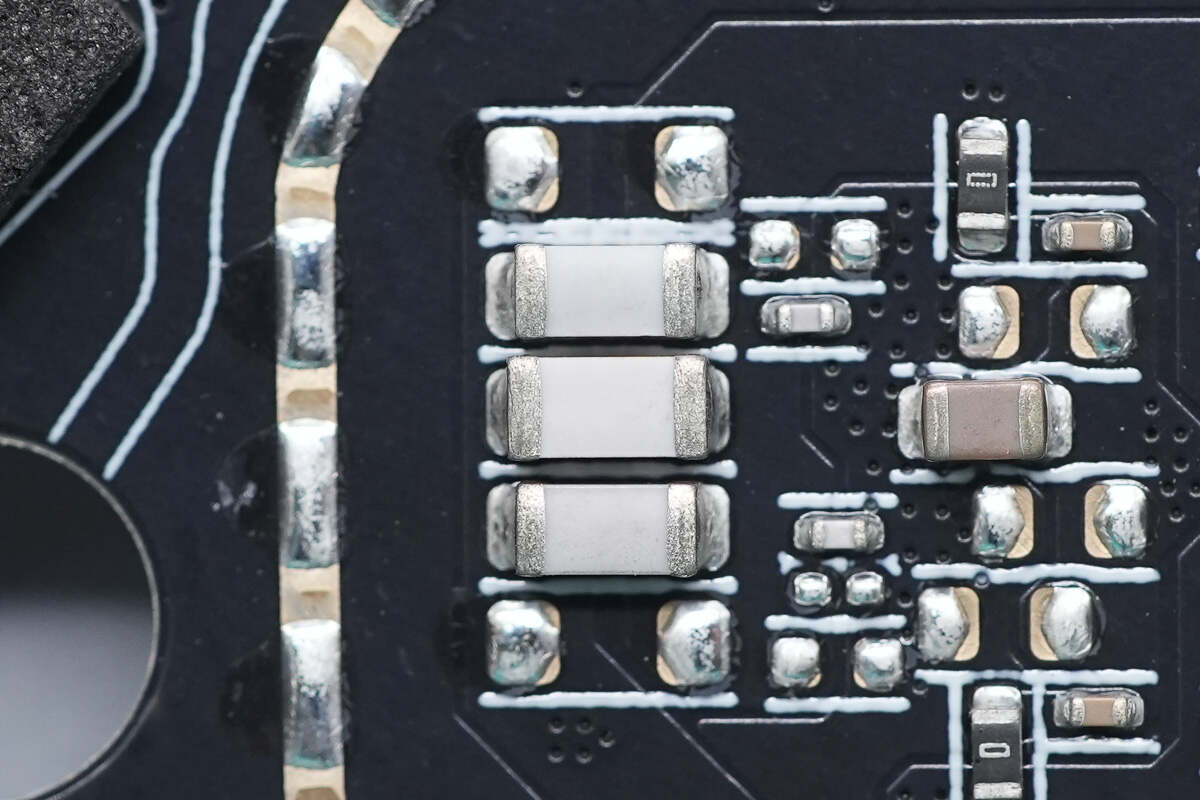
Close-up of NPO resonant capacitors.
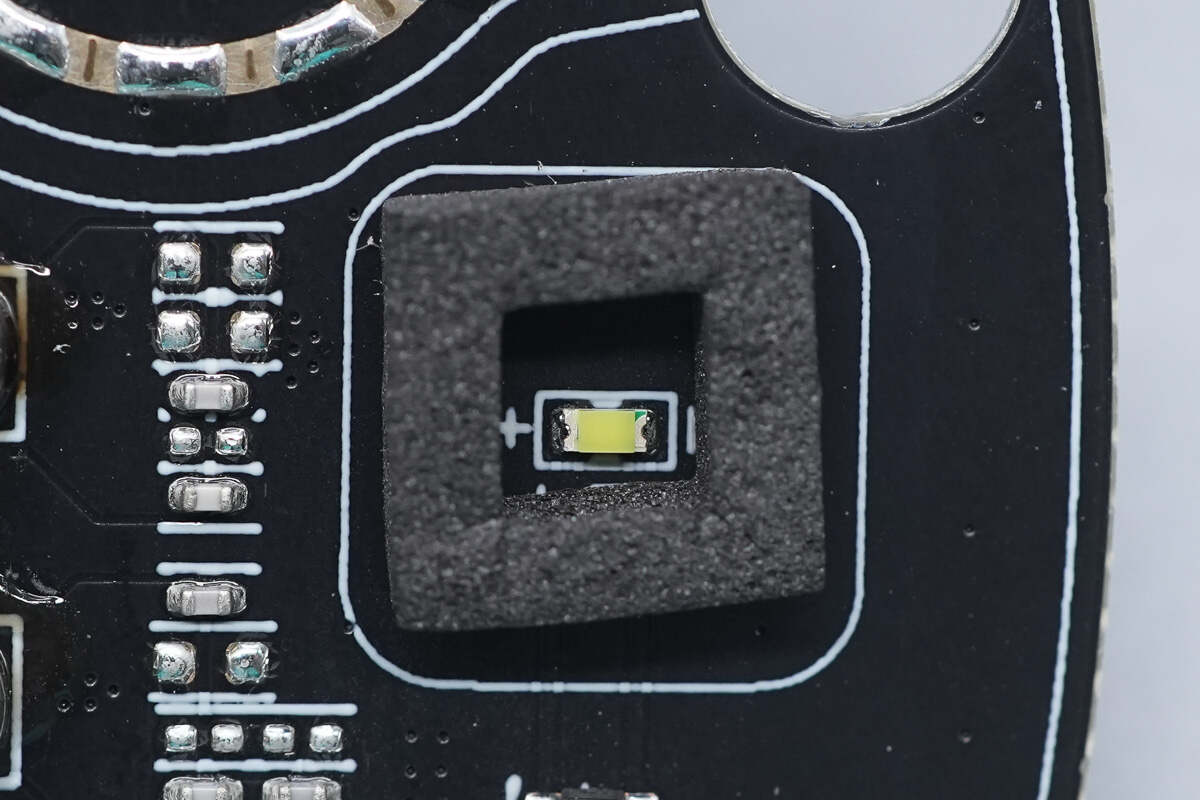
Close-up of the LED indicator light.
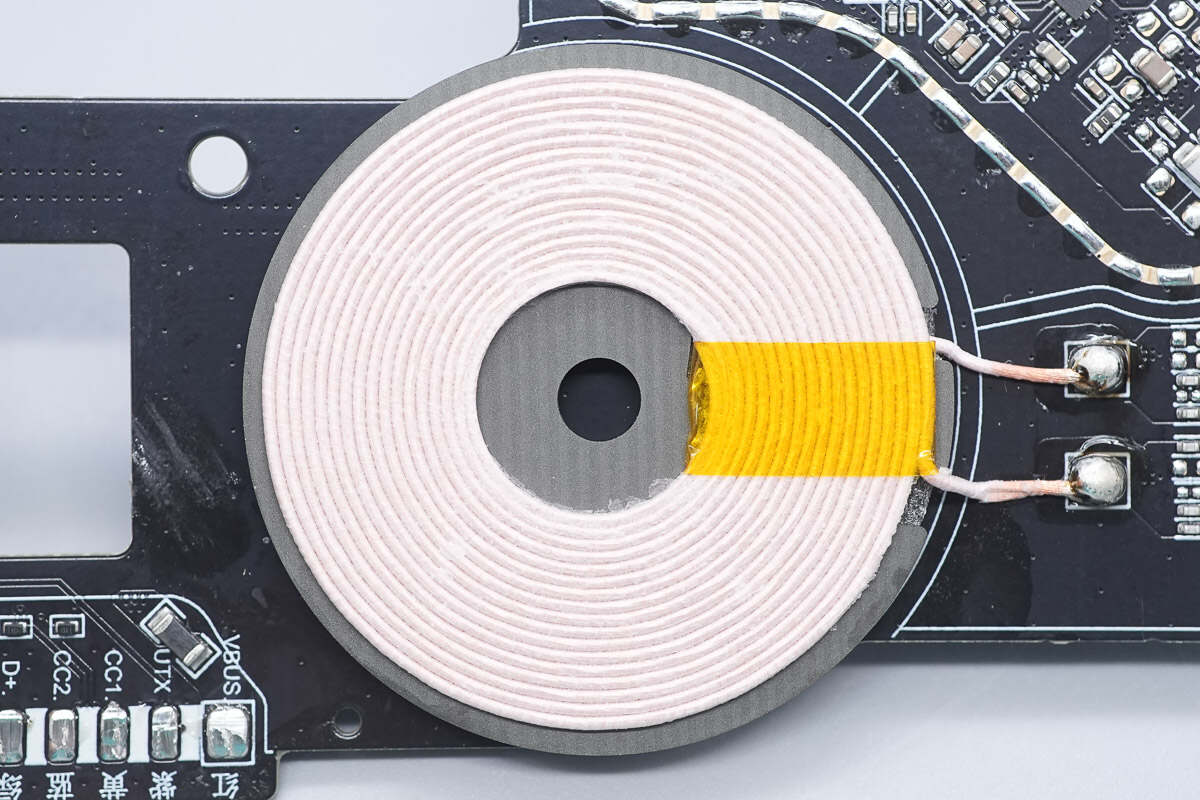
Close-up of the wireless charging coil.
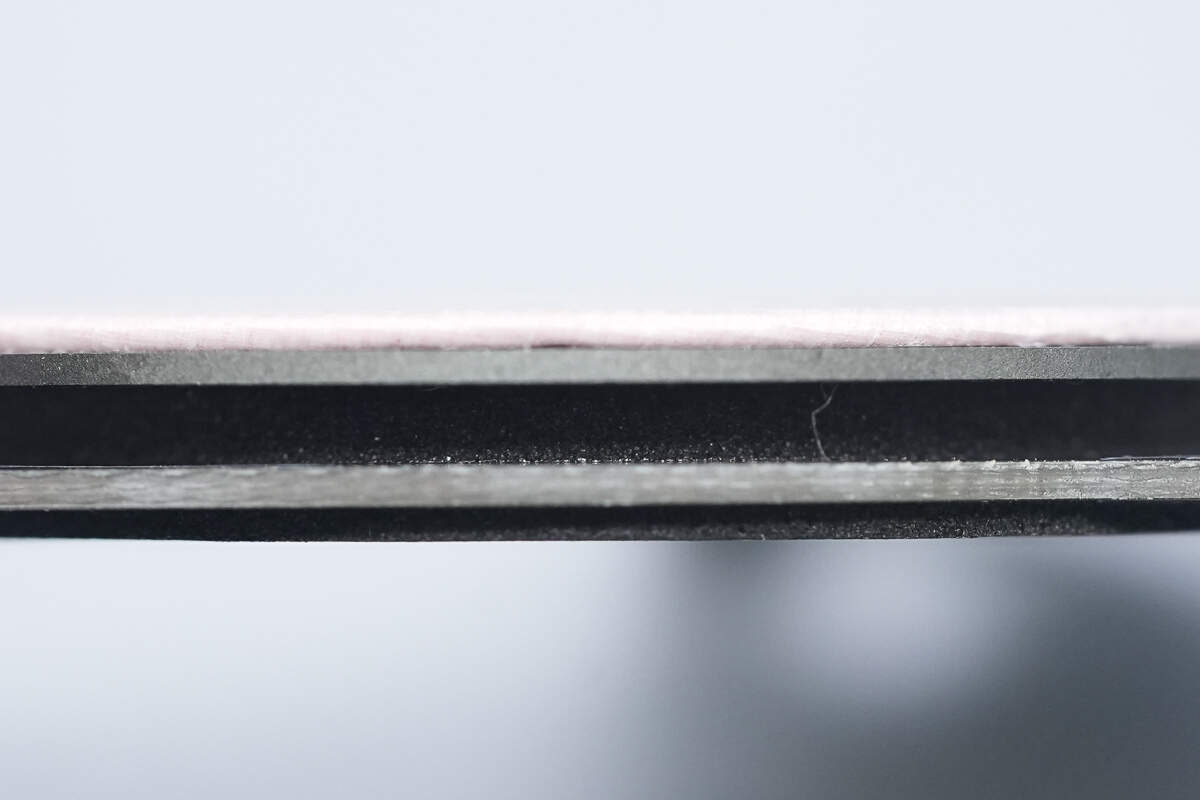
Foam padding is placed beneath the coil and the magnetic shielding sheet.
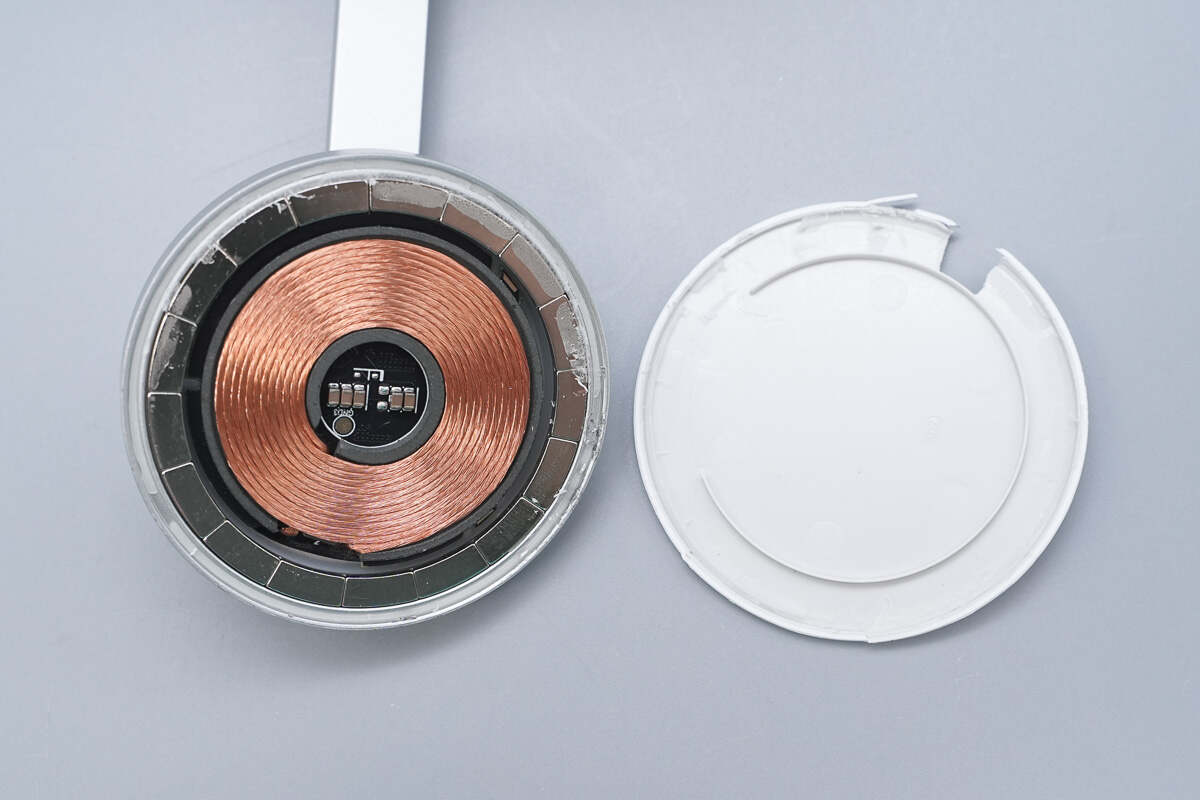
Remove the front cover of the magnetic wireless charging panel.
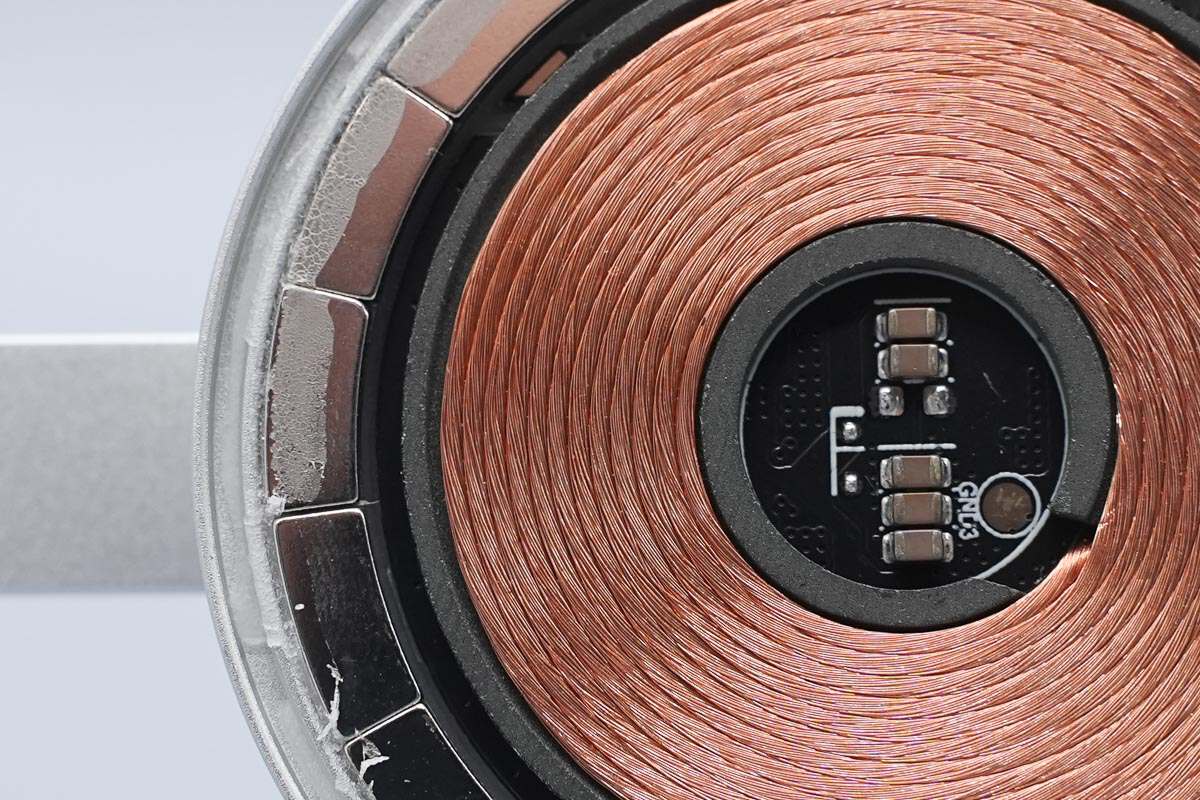
The magnetic ring is reinforced with adhesive, and the wireless charging coil is wound with Litz wire.
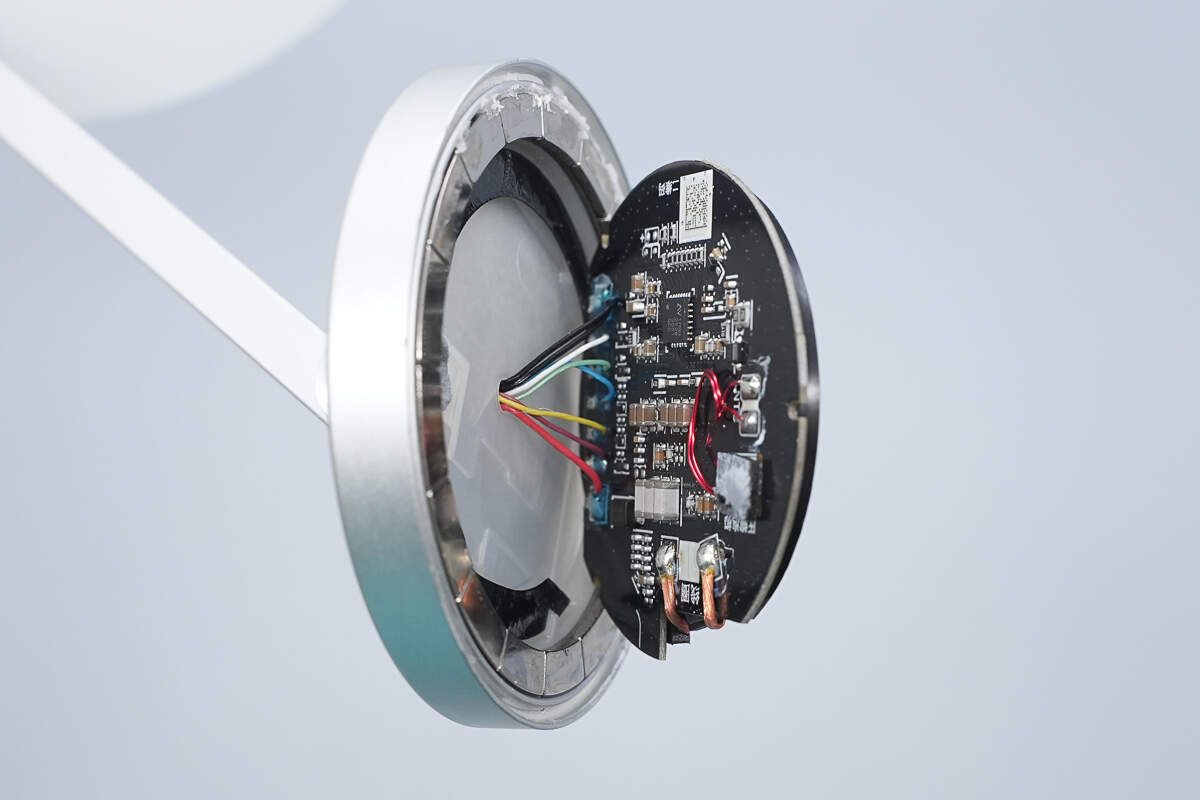
The wires are soldered to the back side of the PCB.
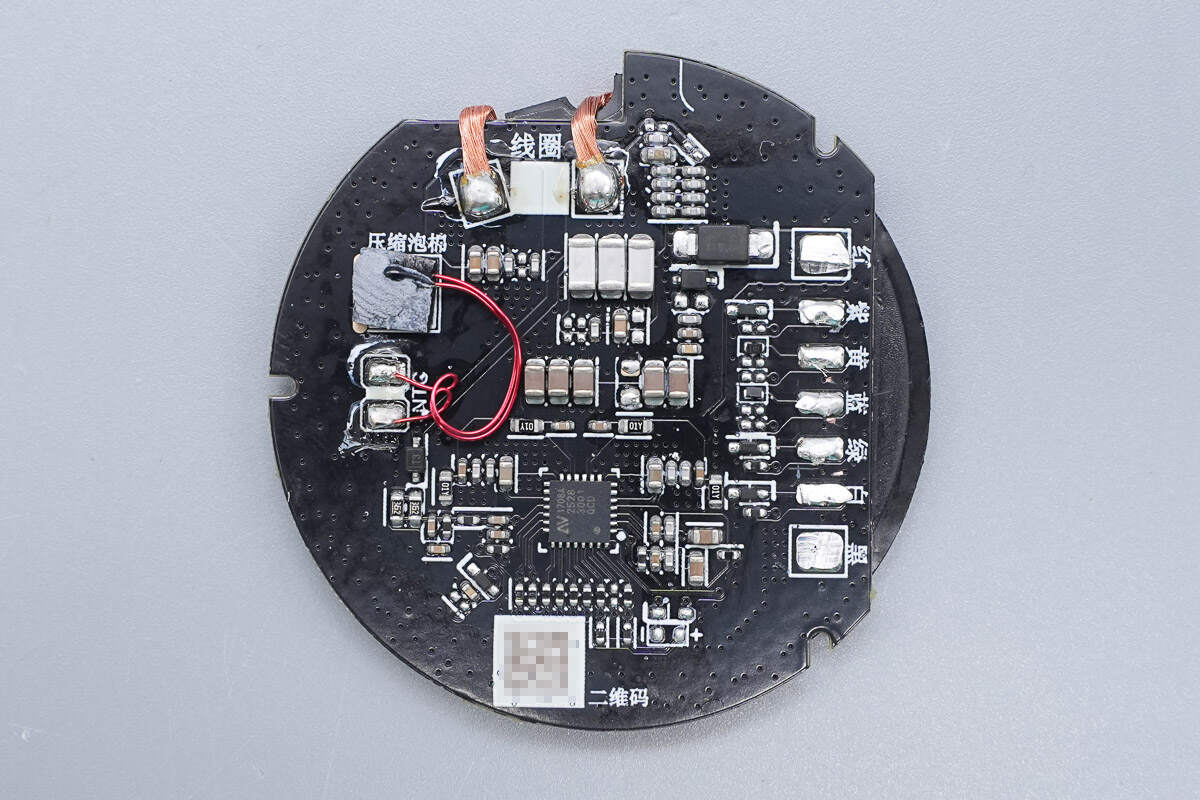
The back side of the PCB houses components such as the wireless charging chip, a thermistor, and NPO resonant capacitors.
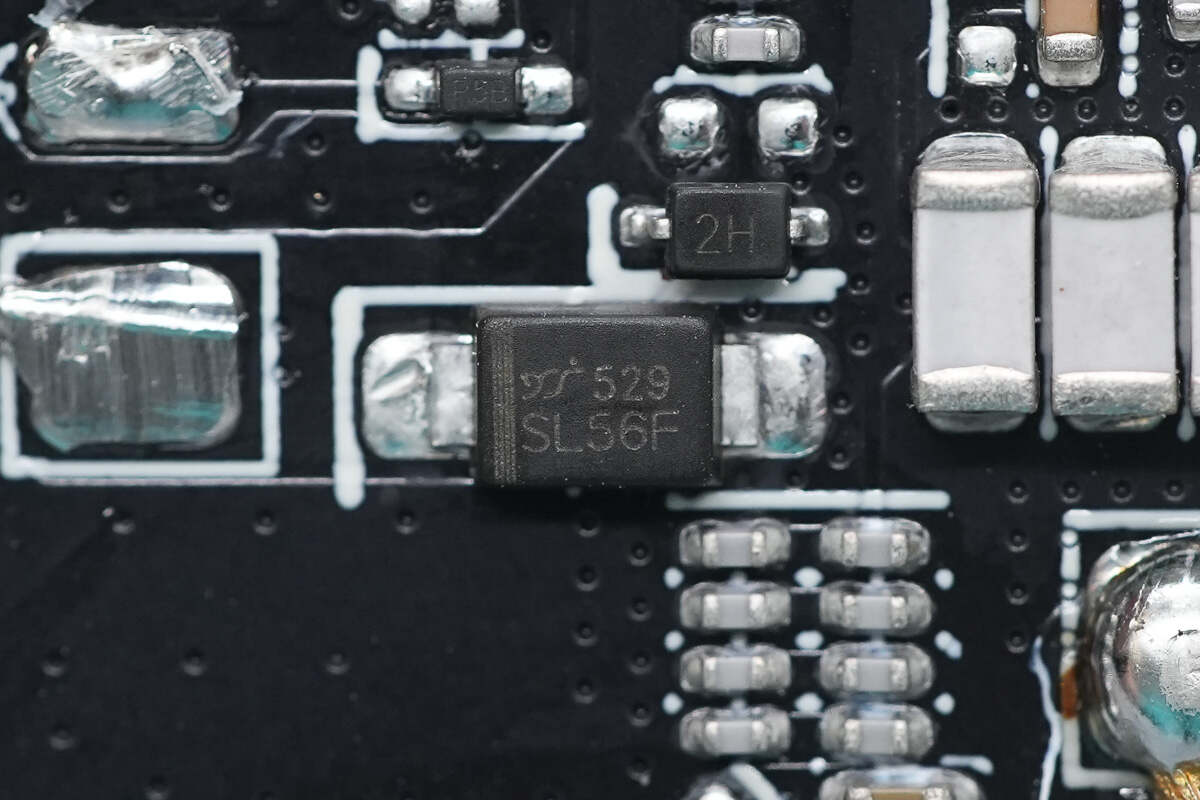
Close-up of another YJ SL56F diode.
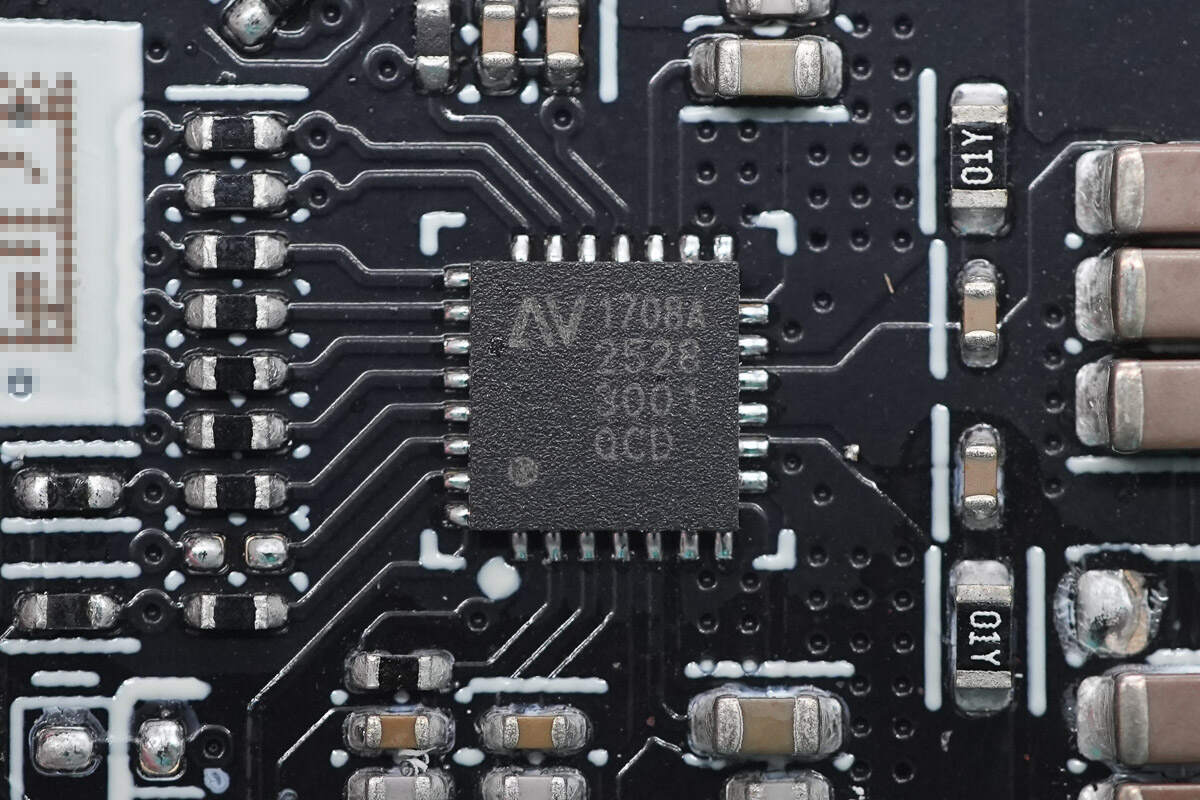
The wireless charging control chip is the NU1708A from NuVolta, a highly integrated wireless charging transmitter IC. It integrates an MCU and wireless charging power stage within a single package, combining the traditional wireless charging controller and power full-bridge chip, significantly saving space. This single chip supports a complete wireless charging design with an output power of up to 30W.
The NU1708A features built-in high-precision lossless current sensing for foreign object detection and in-band communication. It includes integrated protection functions such as input undervoltage lockout, overvoltage protection, overcurrent protection, and thermal shutdown. The chip supports I²C and UART interfaces and has an internal ADC for monitoring charging parameters. It also supports QC and PD fast charging power input, operates with low quiescent current, and comes in a 4×4mm QFN package.
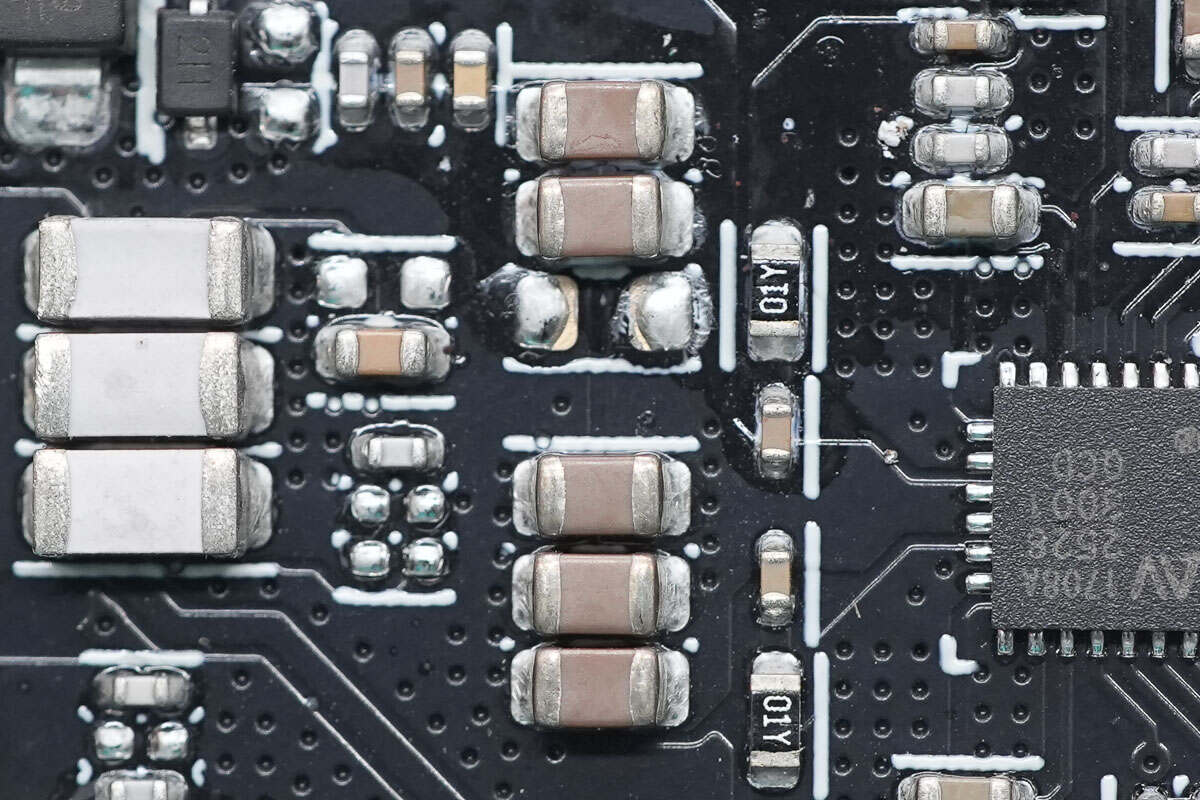
Close-up of the MLCC filtering capacitors.
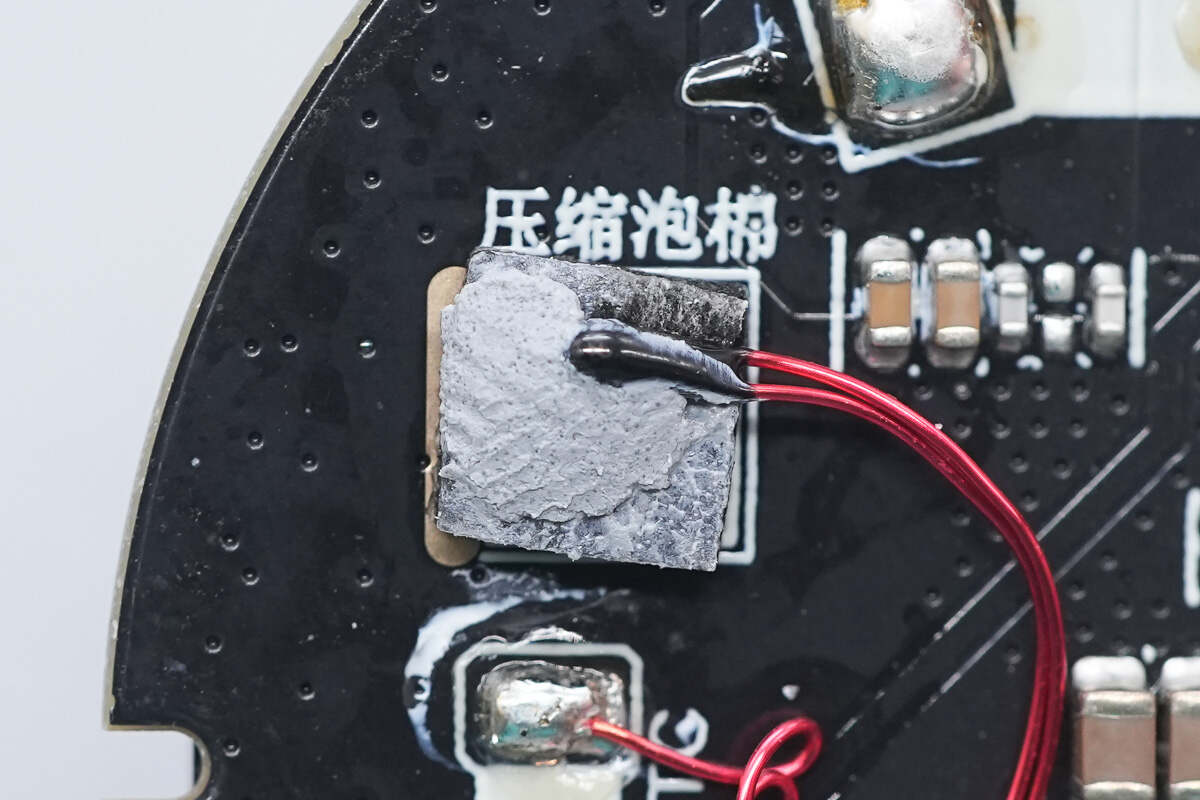
Close-up of the thermistor.
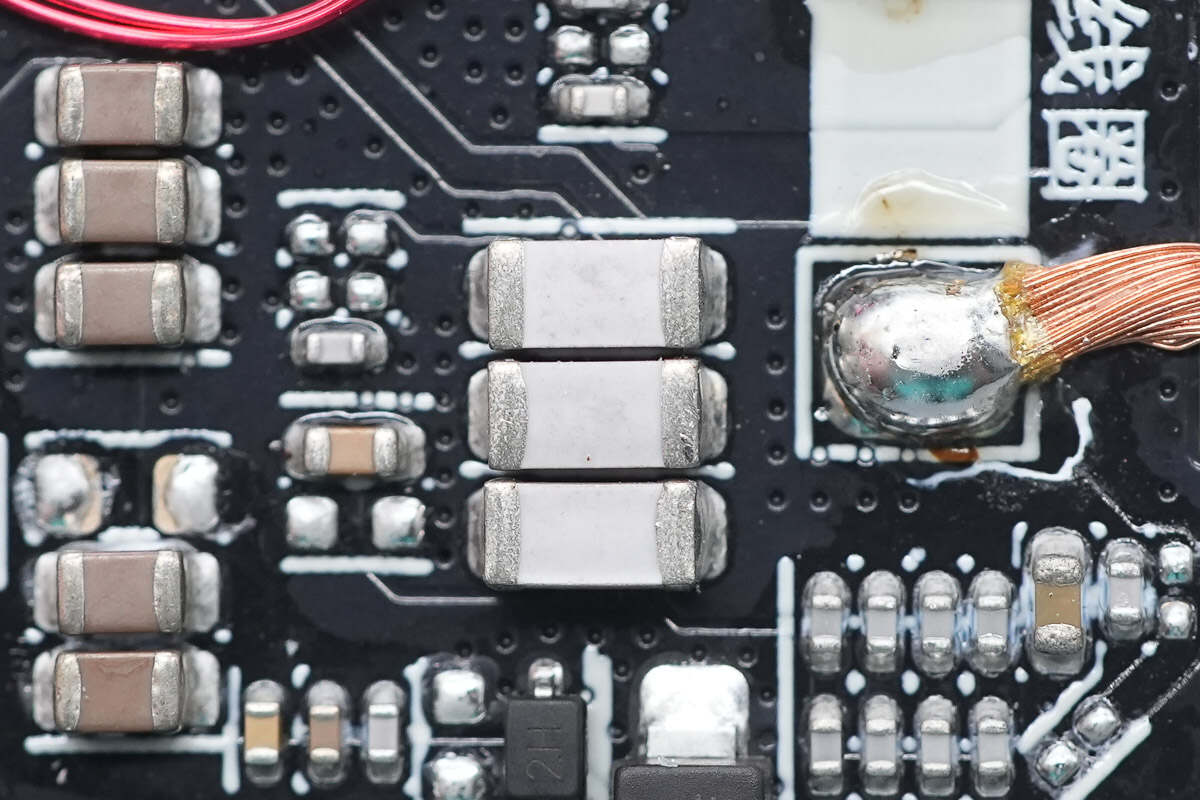
Close-up of NPO resonant capacitors.
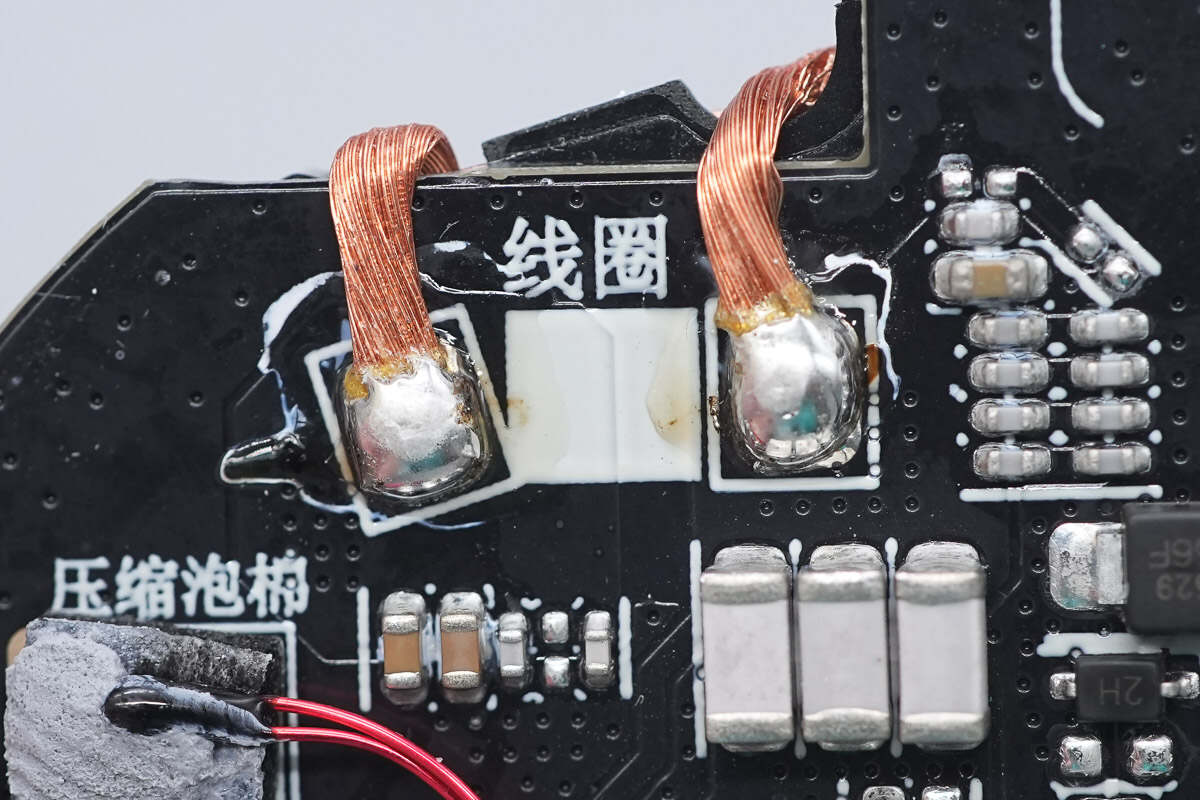
The solder joints of the wireless charging coil are well-formed and robust.
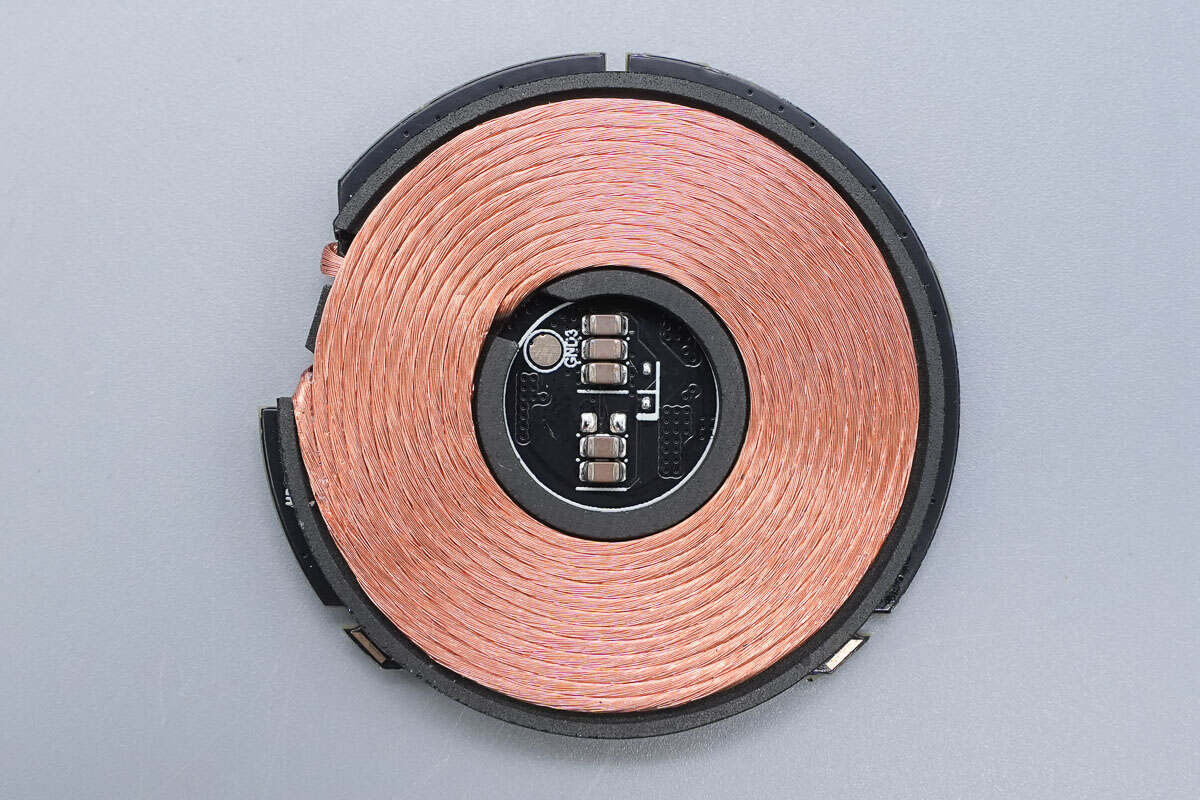
The coil and magnetic shielding sheet are secured inside a plastic partition.
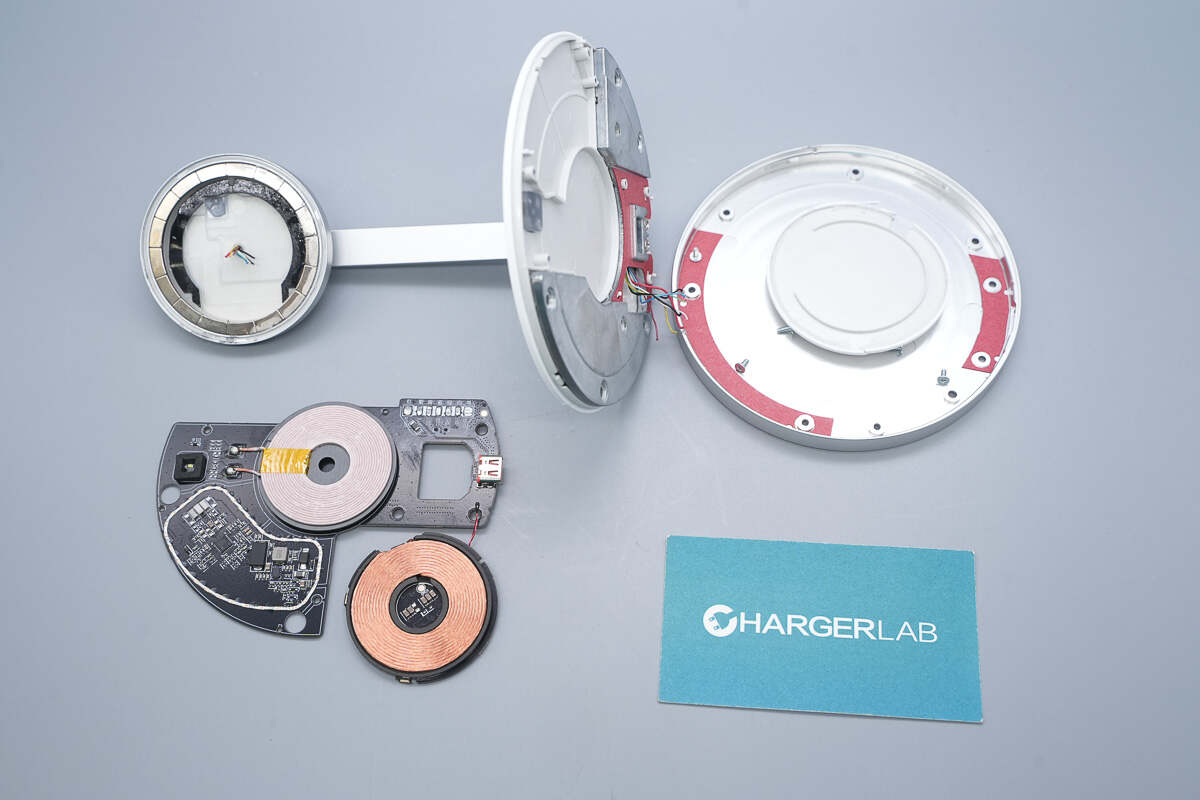
Well, those are all components of the Xiaomi 30W 2-in-1 Magnetic Wireless Charger.
Summary of ChargerLAB

Here is the component list of the Xiaomi 30W 2-in-1 Magnetic Wireless Charger for your convenience.
It combines wireless charging into a 2-in-1 solution, helping to simplify desktop setup. The base features an LED indicator that clearly displays the charging status. The magnetic charging panel supports up to 30W wireless charging for Xiaomi 15 and 17 series devices, with an adjustable angle for optimal viewing. It also delivers up to 7.5W for iPhones. The base provides an additional 5W of wireless charging power. The product features eight layers of built-in safety protection.
After taking it apart, we found that it uses two wireless charging SoCs from NuVolta: the NU1705A and NU1708A. Thanks to their high level of integration, the dual wireless charging circuit design is greatly simplified. Internal components in the base are secured with screws. The magnetic ring inside the magnetic wireless charging panel is reinforced with adhesive, and the wiring is secured with glue, reflecting careful and precise workmanship.
Related Articles:
1. Teardown of Xiaomi 30W Car Magnetic Wireless Charger (MDY-20-ED)
2. Teardown of Boco Electronics 800W SiC Server Power Supply (BCSE800AP-12E01)
3. Teardown of Lenovo 100W GaN Power Adapter (ADL100UAGC3A)

